HISTORY PHOTOGRAPHY MISCELLANEOUS
Saturday 12th February 1876 Page 4 - The Bacchus Marsh Express (Victoria)
THE LARGEST PHOTOGRAPH IN THE WORLD
Of late years the art of photography has made rapid progress, but it has been left to a colonial amateur to produce the largest specimen of photography extant. Mr. Bernhardt Otto Holterman, of St. Leonard's, North Shore, Sydney, a gentleman who has devoted many years of patient study to the development of his favorite art, recently conceived the idea of producing, by a direct negative, pictures of figures, scenery, of a size hitherto considered impossible. With this view he placed himself in correspondence with an eminent firm in Germany and in furtherance of his scheme visited the Fatherland personally, where, under his own supervision, a lens was manufactured, capable of producing a negative in dimensions 5ft. 6in. by 3ft. 6in. After much trouble and an expenditure of upwards of £1,000 sterling, he landed his apparatus safely in Sydney and at once set to work to produce a picture of that beautiful city. In this object he was assisted by Mr. Charles Bayliss and as the result of their united efforts, a comprehensive panoramic view of the city and suburbs, extending over an area of nearly twenty miles, has been produced. A copy of this magnificent photograph was exhibited in this office on Wednesday and as a specimen of photographic art it has no equal. The view was taken from the tower of Mr. Holterman's villa residence, at a height of 300ft above the sea level. The foreground represents the suburbs of St. Leonards, the buildings of which are shown with the distinctness of a carte de visite. A portion of the harbor is then met with and in a clear, beautiful-tinted perspective the city is shown. Considering that a distance of several miles is included in one direction and that almost every building is brought into bold relief, the picture must be regarded as a triumph of photographic art. Mr. Holterman being desirous of representing the Australian colonies at the forth coming centennial exhibition at Philadelphia, is about to proceed there, taking with him many interesting views of colonial scenery. Mr. Bayliss has been located in Melbourne for some weeks and during his stay has taken a series of panoramic views of the city from the tower of Government-house. The panorama comprises eleven views, each 18 inch by 22 inch, which, joined together, form an exceedingly effective representation of "the queen city of the south". Victorians may be proud of their representation at Philadelphia.
EDINBURGH PHOTOGRAPHIC SOCIETY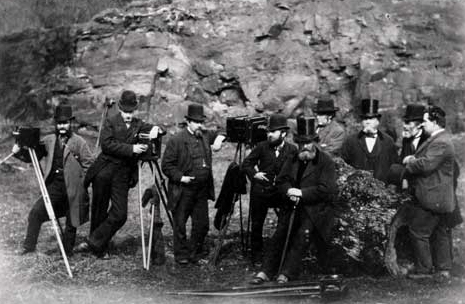
Outing to Cadzow Forest c.1877
EDINBURGH PHOTOGRAPHIC SOCIETY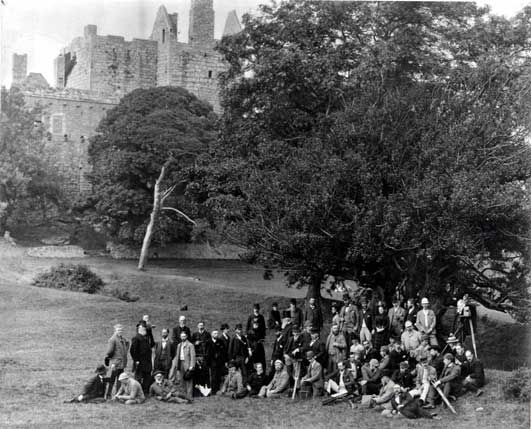
Saturday 18th October 1879 Page 3 - The Sydney Morning Herald (NSW)
SYDNEY INTERNATIONAL EXHIBITION
Among the amusements which the International Exhibition has attracted to this city, the camera obscura erected by the Comet Camera Company, of Melbourne, opposite the entrance to the Domain, in College-street, is certainly not the least attractive. The building itself is octagonal in form and on each part a large oil painting (all of them being copies of the great masters) is exhibited. The roof is cone shaped and is surmounted by a statue of Fame, which is a well executed piece of wood carving. Ascending the steps and entering the room, we find that the camera is five feet in diameter and has an area of 16 square feet. This is very much larger than any hitherto exhibited here. The picture thrown, too, is very beautiful and will well repay the visitor. It embraces, of course, the whole circle and every object is brought out with a distinctness and yet softness that a painter might envy.
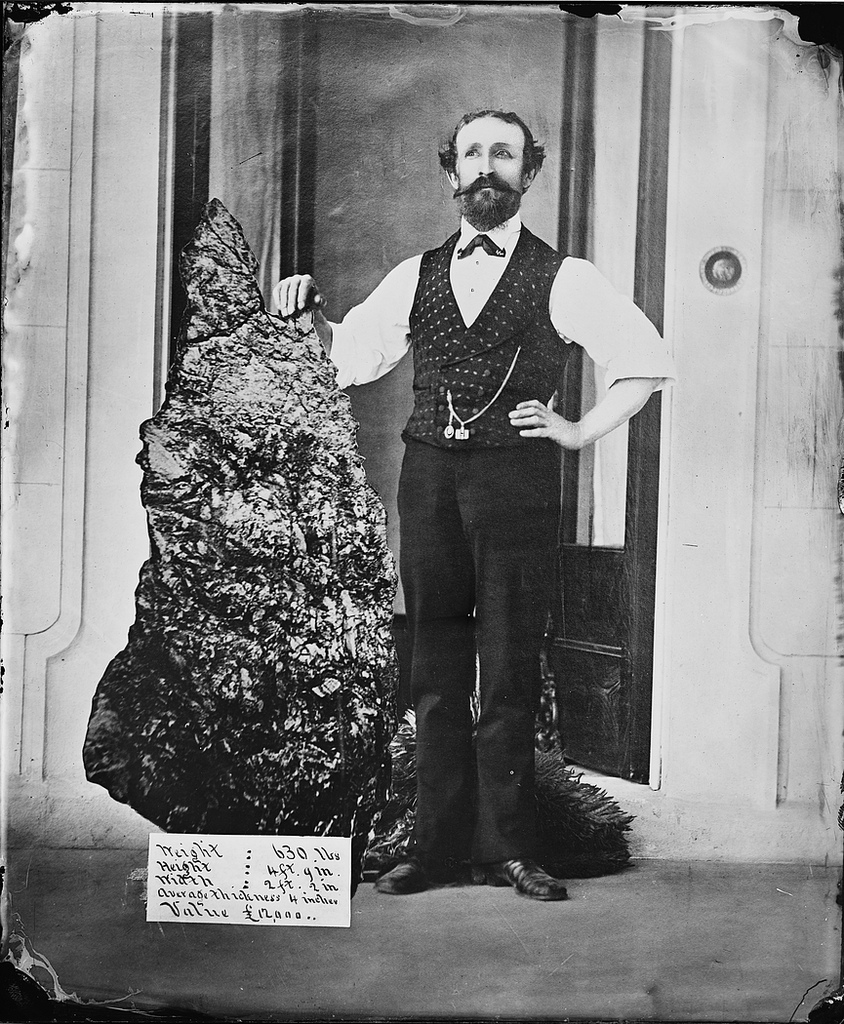
BERNHARDT OTTO HOLTERMANN
Born 29th April 1838 Hamburg, Germany
Died 29th April 1885 (aged 47) St Leonards, NSW
GOLD MINER, BUSINESSMAN, POLITICIAN
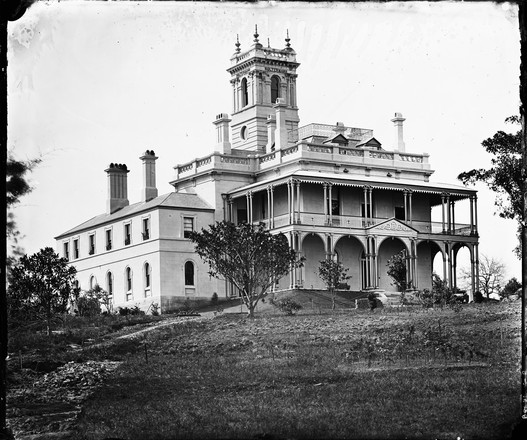
HOLTERMANN MANSION
St. Leonard's, North Shore, Sydney
EDINBURGH PHOTOGRAPHIC SOCIETY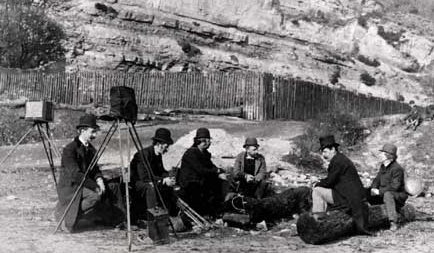
Outing to Blackford Glen c.1890
Saturday 19th November 1892 Page 2 - Evening News (Sydney, NSW)
Union is Strength - The Australian Photographic Journal, 15th November, advocates the formation of a Photographic Society for New South Wales, having for its objects:
(1) The exchange of photographs;
(2) the interchange of ideas and suggestions relating to photography;
(3) the formation of a photographic library;
(4) the promotion of closer acquaintances among amateur photographers in this and other colonies.
Such societies exist in Melbourne, Ballarat, Adelaide, Brisbane, Hobart, Auckland, Wellington, Nelson, Christchurch and Dunedin; but Sydney is without a representative body of photographic artists.
Saturday 3rd March 1894 Page 2 - Wagga Wagga Express (NSW)
AMATEUR PHOTOGRAPHY IN RUSSIA
Amateur photography has made but very little progress in Russia, There are not, I believe, any photographic societies in that country, and one rarely, if ever, hears of a Russian amateur contributing to any of the international exhibitions. I have often wondered why this was so, and have at last discovered the solution of the problem. In this country one is free to go where one pleases and to photograph anything. Amateur photography thus becomes a pleasant and fascinating pastime. In Russia, however, things are different.
A gentleman who has resided for years in that country relates, his experiences, and from these I gather the following information: To become an amateur photographer it is necessary to communicate with the police and obtain a license. This having after considerable delay, been granted, it is advisable for one to be very careful where he or she is seen photographing. If one happens to be in close proximity to a fortress when discovered by the Secret Intelligence Department, he stands a chance of being despatched on a free excursion to Siberia, where return tickets are not supplied. Further, of every picture made a copy must be sent to the police authorities, and another must be filed by the photographer for reference. The police have also the right at any part of the day or night to enter your dark room and examine everything therein, and to search all of your photographic paraphernalia. Nor is this all the unfortunate amateur has to put up with.
All of his dry plates have to be imported (as they are not manufactured in Russia), and each box is opened and every plate examined. It is a wonder they do not immerse each one in a developer as well, to ascertain if there are any Nihilistic communications latent in the film.
Poor, suffering, Russian amateur photographers ! I would gladly extend to you my deepest sympathies, only I know it will be useless. Every line of this will be blackened out with an ink pad before anyone in your country can receive this copy of the Herald.
Thursday 2nd May 1895 Page 5 - Evening News (Sydney, NSW)
A MONSTER PICTURE
There is on view in the smoking room at the Hotel Metropole one of the largest examples of the photographic art ever exhibited in Sydney. It consists of a panoramic view of the grounds and buildings of the Royal Agricultural Society of New South Wales taken on Easter Monday when their annual show was in full swing and the attendance was at its highest point. The picture, not including the mounting, is 27ft long by 3ft 6in broad and was taken from the vicinity of the secretary's office, the time chosen being while the jumping competitions were in progress. It was taken in eight sections and its clearness of outline and distinctness of detail is such that many who were present on Easter Monday will be able to easily recognize their own likenesses. The work was executed by the photographers, attached to the Government Printing Department, to whom it does much credit. It will be on exhibition at the Metropole for a week or two.
Saturday 29th August 1896 Page 4 - Newcastle Morning Herald and Miners Advocate (NSW)
THE PROBLEM OF PHOTORAPHY IN COLORS
Professor Lippmann's recent communication to the Royal Society on Color Photography by his Interferential Method must convince the most skeptical that the problem of taking photographs in natural colors has been solved. The process is very simple, it being only necessary to provide a metallic mirror backing to a transparent photographic film during exposure; the development is exactly the same as in ordinary photography, an image of the object in all its natural colors gradually appearing. Professor Lippmann forms the mirror of metallic mercury, which, by the use of a suitable camera slide, forms a layer at the back of the sensitized plate in intimate contact with the film. Various photographs of natural objects, such as landscapes, flowers and a portrait from life, were projected on the screen in their natural colors.
Friday 17th February 1899 Page 2S - Bendigo Advertiser (Vic)
POLITE PHOTOGRAPHERS
The knack which French photographers and especially those of Paris, possess in relieving their sitters of a constrained and distressed look while sitting for their portraits has long been the envy and perplexity of photographers of other nations. A well known West End photographer, on a recent visit to Paris, took pains to study the means by which this very desirable result was reached. He reports that it all lies in a very simple device, which well illustrates the nature of the Frenchman. When a lady, for instance, is sitting to a photographer for a portrait, the operator does not, in a perfunctory manner, coldly request her to "Look pleasant now, madam" He says to her, in the most natural and graceful manner in the world. "It is quite unnecessary to ask madam to look pleasant; she could not look otherwise". The lady, of course, acknowledges the compliment with her most gracious and high-bred smile. "Click" goes the camera and the picture is obtained, revealing the sitter at her high-water mark, as it were.
Saturday 18th May 1907 Page 16 - Newcastle Morning Herald and Miners Advocate (NSW)
WOMAN PHOTOGRAPHERS
The field for woman photographers is widening daily. Studio work by no means engages the greatest number of workers, though when one counts re-touchers and the studio staff generally an enormous number of women are found to be employed. Manufacturing firms all over the world are constantly on the look out for fresh designs and these, or ideas for them, are very frequently supplied by women photographers. Menu cards, book plates, panels for furniture, all furnish means for profitable application. There are further possibilities in book and magazine covers, title pages, headings and initial letters. Posters and friezes for wall decoration have recently been carried out solely by photography. The field of design precludes nothing that is decorative. Fruit and flowers form the chief motives for the decorative photographer, while leaves, ferns, seed vessels, shells and berries have been used by one or two workers with the greatest success. This decorative work is generally done in a studio and enlarging and coloring are of course special features in the work of photographic artists. It is work specially well adapted for women and it is satisfactory to learn on indisputable authority that the camera is proving so good a friend to workers. There is a large variety of Australian subjects for which inquiry is constantly being made in commercial circles and good pictures of birds and foliage, suitable for decorative work, are in much demand. Photographs of Australian birds, enlarged and truly colored, would almost certainly prove surprisingly profitable.
Saturday 13th February 1909 Page 43 - The Australasian (Melbourne, Vic.)
WOMEN PHOTOGRAPHERS
By QUEEN BEE
At the photographic interstate exhibition now being held in the Victorian artists' gallery, Albert-street, Eastern Hill, some 25 women have competed, hanging 50 works out of the total of 414. In the awards Mrs William Smith comes first in the genre section, with her admirable picture, "Snake Charmer" and she also takes the first prize in the architectural class for her "Cloisters at Toledo", a very sympathetic effort, aided considerably by the good judgment shown in its point of vision, really the leading principle in making a photographic picture. In "Autumn" Miss Lucy Archibald has secured a view that feelingly illustrates her title and Mrs E.E. Burgess has taken a lovely bit of river scenery in "The Yarra at Reyington" a spot that in all seasons furnishes endless charming compositions. The peep at "Gardiner's Creek", by Miss Florence Blanchard, will raise curiosity as to the locality of such a picturesque scene, of which the camera has been allowed honestly to do its own work. Mrs Mildred Nesbitt contributes a delightful Northamptonshire lane that English artists have painted so often in the spring and summer. Miss C.M. Pincott works atmospheric effects into the "Threatening Storm" and "Yarra at Warburton" and Mrs William Smith, in the same section, goes very far afield for her "Woods at Hague", "Beeches at Killymoon", the grand old Thames from Lambeth-bridge, "Salisbury Crags", "A Sweet Evening", Lake Geneva and "Home Sweet Home", all viewed and manipulated with the ardent spirit of the enthusiastic photographer.
Those familiar with Lorne scenery will recognize the truth of Miss Rita Vial's "Mouth of the Erskine", a well-known spot to those who yearly pass their holidays on the shores of Loutitt Bay. In "Evening Mists" by Miss M. White must have waited and watched some time before she secured the effect shown in her judicious print. In the portrait section women workers have again scored; Mrs E.E. Burgess by means of a capital model of a "Daylesford Veteran" and Miss Sylvia Brandt in three head studies. Although not a prize-taker, Mrs William Smith comes very near with her "Colleen Bawn" and Miss C. Pincott and Mrs D. Muntz's portrait studies are worthy special note. It is in the genre work that photography makes its boldest bid to be considered the "handmaid of art" and it is in this department that it encounters most difficulties. In addition to Mrs William Smith's prize picture, there are some thoughtful examples by Mrs A.E. Walcott that ought not to be passed over, such as "In Sickness and Health", a lovely collie dog watching beside his master and "Stirring the Christmas Pudding", "Play" by Miss Nellie Reed, "A Child",
"That lightly draws its breath.
And feels its life in every limb".
by Miss Agnes Thomson and "An Old Salt", are genuine genre subjects that show capable composition and well-studied lighting. In animal studies Mrs A.E. Walcott again scores, with "My Master's Paper", a grand old dog, with the paper in his mouth, waiting at the door to deliver it. Amongst the non-competitive section a number of seascapes of high merit are hung by Miss Lucy Archibald. Taken altogether, the women workers have done remarkably well, their contributions adding an immense amount of interest to the exhibition.
Thursday 23rd December 1909 Bendigo Advertiser (Vic)
PHOTOGRAPHERS
Leading the photographic displays in Bendigo is that of Mr. Vincent Kelly, of Mitchell-street, in whose show cases are to be found a splendid array of all classes of photographic studies. Mr. Kelly has come very much to the fore of late years and his ever-increasing business is the result of his thorough knowledge of the art of photography. Particularly attractive amongst Mr. Kelly's studies are the sepia sketch pictures, which are said to be an advance on the Gibson studies, which were introduced some time ago by Mr. Kelly and which immediately became very popular. Preparations have been made for the Christmas season by way of special charges and special designs.
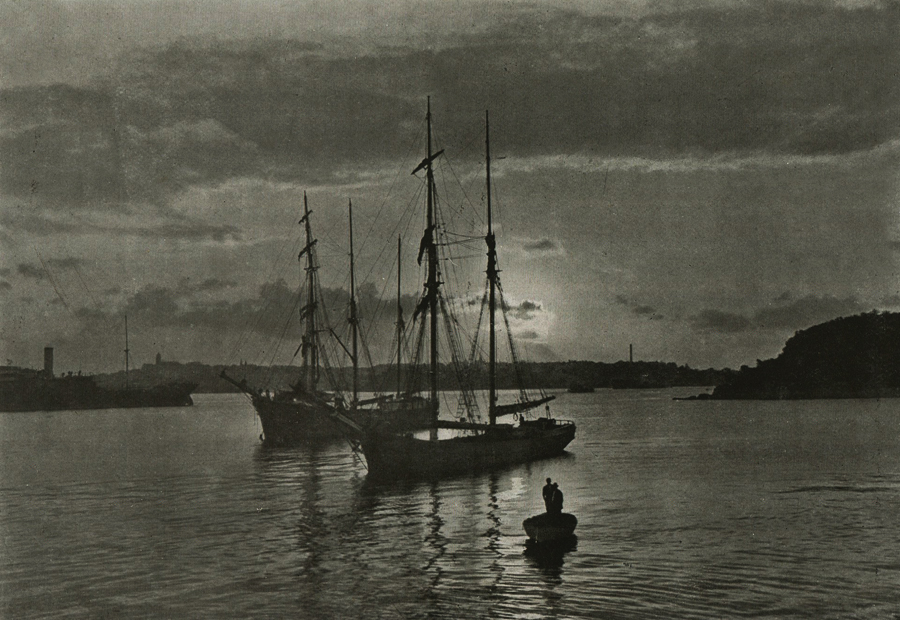
"SAFE AT ANCHOR"
J.F. HURLEY c.1910
PRESS PHOTOGRAPHERS APRIL 1911
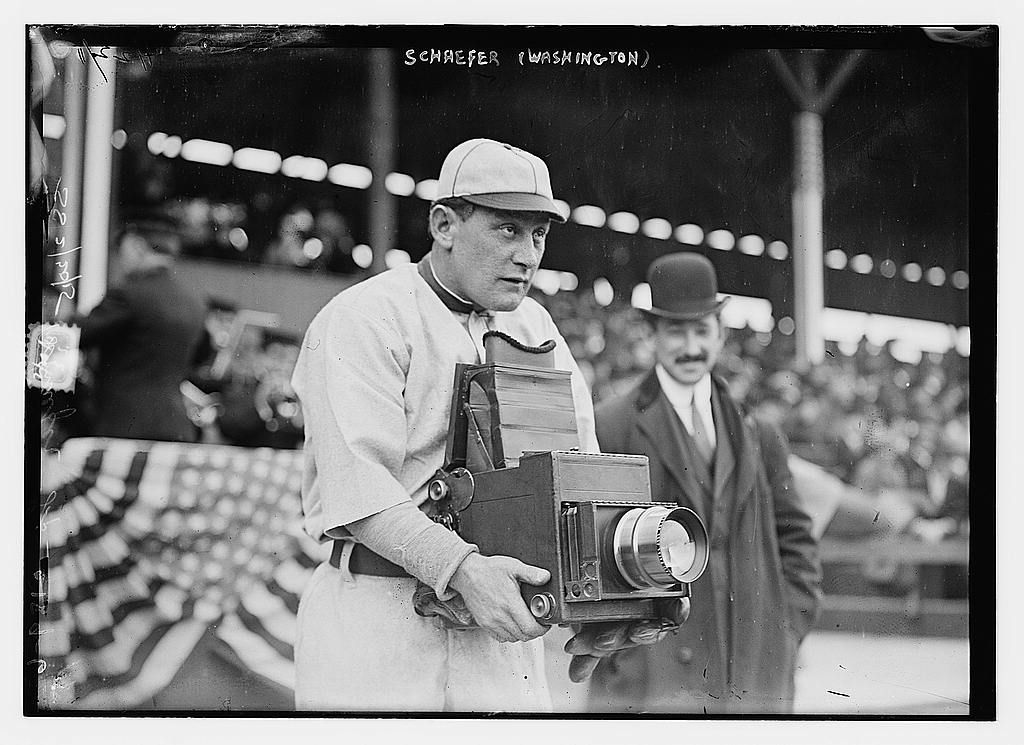
Photo shows Herman A. "Germany" Schaefer (1876-1919), one of the most entertaining characters in baseball history, trying out the other side of the camera during the Washington Senators visit to play the New York Highlanders in April, 1911. Germany Schaefer, a versatile infielder and quick baserunner, played most of his career with the Detroit Tigers and the Washington Senators. The camera is a 5x7 Press Graflex with a modification to accommodate the large lens. The camera was produced by the Folmer & Schwing Division of Eastman Kodak Co. between 1907 and 1923.
22nd November 1911 Page 663 - The Australasian Photo-Review
JAMES FRANCIS "FRANK" HURLEY
JOINS THE MAWSON ANTARCTIC EXPEDITION AS OFFICIAL PHOTOGRAPHER
Mr. J.F. Hurley, so well-known to Sydney photographers and for some time past associated with Sydney depot of Kodak Ltd., has been selected to accompany the Mawson Expedition as Official Photographer. Both parties have reason to be satisfied with this arrangement, inasmuch as Mr. Mawson secures the services of a thoroughly capable and efficient photographer upon whom he may rely at all times and Mr. Hurley is given an opportunity such as comes to few men.
Mr. J.F. Hurley is by profession an electrician and instrument maker; holding Sydney Technical College Honor certificates. He was employed in the Government Electric Light Branch as clerical electrical calculator and subsequently served as a fitter at the Eskbank Ironworks, Lithgow.
He is now in his twenty-sixth year and took up the study of photographic art some twelve years ago. At that time the camera was but a hobby which was enthusiastically indulged in. The outcome was the adoption of photography as a profession five years ago. Mr. Hurley's work has been generally admired, not only for its technical excellence, but also for its originality of conception and departure from the conventional.
He has given considerable time to research work and the application of photography to scientific purposes and is a keen enthusiast in cinematography.
Endowed with such qualifications, Mr. Hurley should certainly prove of great assistance to Mr. Mawson in his Expedition. We feel sure that we voice the sentiments of the photographic fraternity in wishing Mr. Hurley "Bon Voyage and good luck".
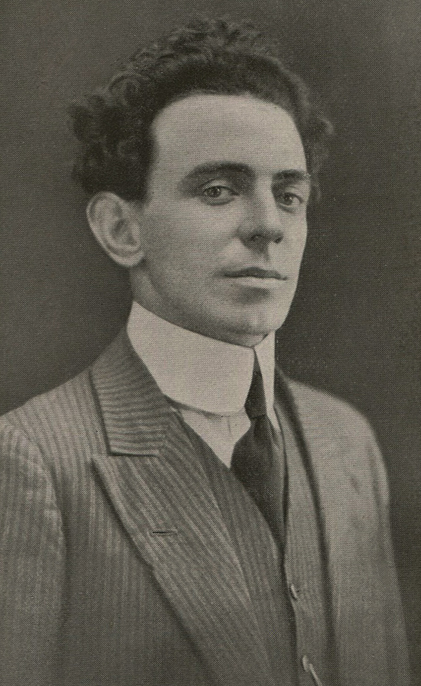
JAMES FRANCIS "FRANK" HURLEY
JOINS THE MAWSON ANTARCTIC EXPEDITION
AS OFFICIAL PHOTOGRAPHER IN 1911
PRESS PHOTOGRAPHERS 1914
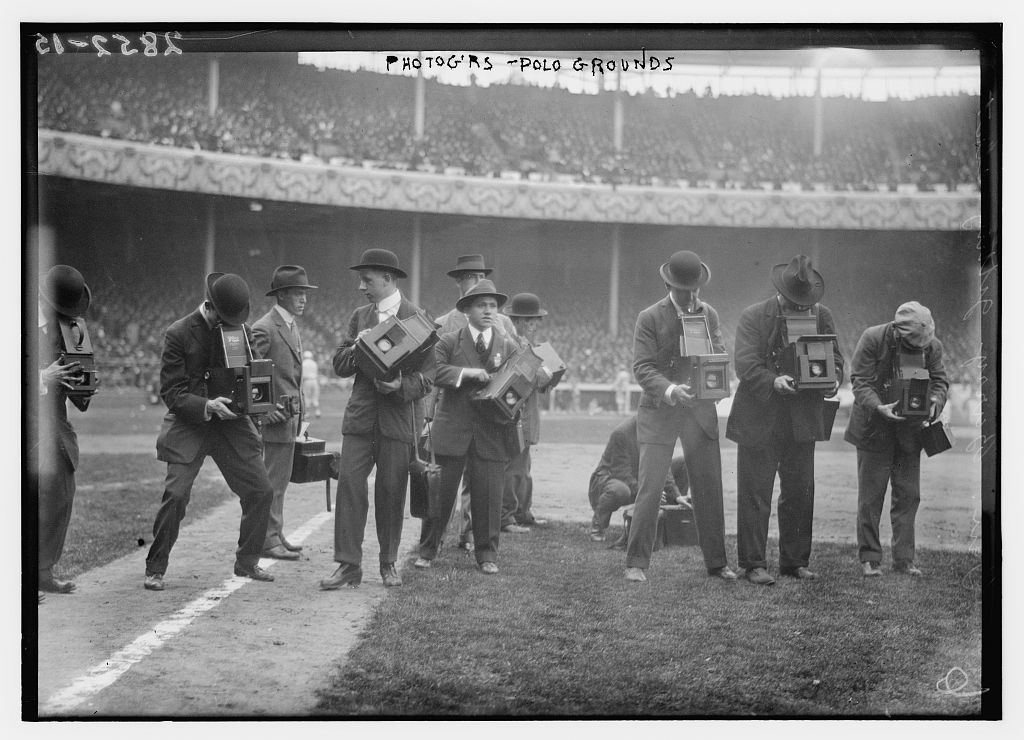
Photographers - Polo Grounds 1914
image source: Repository: Library of Congress, Prints and Photographs Division, Washington, DC 20540 USA
Monday 10th August 1914 The Sydney Morning Herald (NSW)
PHOTOGRAPHERS BEWARE
The Defence authorities have Issued a warning to photographers and others, quoting section 82 of the Act, which states that any person who, without lawful authority, makes or attempts to make any sketch or photograph of any fort or naval or military work of defence is liable to a penalty of £100, or six months imprisonment and have all the materials in his possession confiscated.
Any person who enters or approaches any fort or naval or military work of defence with sketching or photographic materials in his possession is liable to a penalty of £50 and the forfeiture of the material. Any person who trespasses on any military or naval work of defence is liable to a penalty of £20. Any member of the defence or police forces may, without warrant, arrest any person suspected of any of these offences.
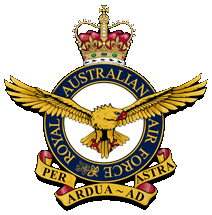

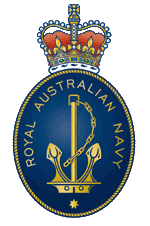
Saturday 25th March 1916 The North Western Advocate and the Emu Bay Times (Tasmania)
PLUCKY PHOTOGRAPHERS
Kinematograph films are proving immensely useful to the French War Staff. The photographers, who are volunteers, must have nerves of steel. They are willing to take great risks and fly in aeroplanes at a low altitude. If an accident happens a special device destroys the films in order to prevent the enemy securing them. The films show the enemy's trenches, bodies of moving troops and the firing of guns. Photographs taken from sea planes have sometimes revealed moving periscopes.
Saturday 6th August 1921 Page 14 - The Mercury (Hobart, Tas.)
WOMEN PHOTOGRAPHERS
A recent London paper mentions that at a recent conference of the profession a well-known London photographer expressed the opinion that photography was not a man's work, women carrying out the various operations and processes far better than men. Not only, he declared, are they far more sympathetic and successful in putting sitters at their ease, but in printing and developing they far surpass men. However this may be and one is doubtful how even woman's patience and tact could exceed that often shown by a male photographer in arranging large groups or inducing a spoilt child to "smile and look pretty", still one cannot help wondering why women who in these days have wandered into so many carefully guarded men's preserves have not taken up seriously the profession of photography. Of course, there is much to be learnt, as in the serious taking up of any business and a certain artistic talent is necessary for good work, but it has considerable interest and is not so heavy as many of the businesses into which women are entering every day. Alice Hughes, whose name as a photographer was so well-known in London in pre-war days, realized a large income from her business, in spite of the heavy rent paid for her studio in a very fashionable street. In Australia and Tasmania, where photography is carried to such a pitch of perfection, one cannot recall the name of a single woman photographer, though one would imagine that it would have far more interest and charm than typing or serving in a shop, while to an intelligent woman the proper preparation should not present insuperable difficulty.
9th June 1922 Page 9 - The Sydney Morning Herald (NSW)
THE KINEMA
EARLY EXHIBITIONS
SOME OF THE PIONEERS
The rapid evolution of the kinematograph, which is demonstrated in a remarkable manner by an exhibition at the Town Hall, which will conclude to-day, is one of the wonders of the age and in its early history in Australia some men who are still prominently associated with the industry played the part of pioneers. One of these, Mr. A.J. Perier, of the firm of Hitchman and Perier, was able yesterday to furnish some interesting information.
Mr. Perier says that the first moving picture machine introduced in Sydney before the advent of the kinematograph was the Edison kinetoscope. This machine resembled a small stereoscopic cabinet. The spectator, gazing through a sight-hole, beheld moving pictures of dancers and subjects of a similar description. The machine was operated by electricity and was generally set in motion on the penny-in-the-slot system.
It was not until towards the end of the year 1896 that the kinematograph itself came to Sydney. Three machines for the projection of kinematograph films were landed by three different people in Sydney. Probably the first one to arrive was one imported by Mr. Perier himself, in his capacity as manager for Messrs. Baker and Rouse and Mr. G. Neymark. This instrument was a projector manufactured by A.J. Pipon, of Paris. As the whole stock of films sent with it consisted of only 12 subjects, the owners awaited further supplies before making a public exhibition. In the meantime, the Tivoli management were able, on 19th September 1896, to exhibit publicly the instrument brought out by Mr. Carl Hertz, the conjurer and the first subject shown to the Sydney public was a view of the traffic across London Bridge. A few days later, on 26th September 1896, the original Lumiere kinematograph was shown privately at the Lyceum Theatre, before a large audience, amongst whom was Sir Frederick Darley. The operator was Monsieur Maurice Sestier, who opened a shop in Pitt-street, near Market-street, under the name of "Salon Lumiere". This was the first home of the moving pictures in Sydney. M. Sestier was followed by Mr. James M'Mahon, who operated with a "Denemy" projector. The M'Mahon brothers secured the premises of the "Lumiere" people and conducted a show there for some time. In the meantime the Pipon machine was taken to Melbourne and a salon was opened in Collins-street.
The Melbourne Cup was first cinematographed in the same year by the Lumiere machine and again in the following year, when three different operators (Messrs. Perier, Blow and Thwaites) secured negatives. One of the operators (Mr. Thwaites) showed the finished result on the screen of the Melbourne Opera House the same night. In this he achieved a record for speed which was not beaten in the old country for many a long day. The other films were developed in Sydney in the Falk Studios by Mr. Walter Barnett and M. Sestier.
Mr. Mark Blow, of Sydney, was very early in the field and he and his operator, Mr. Jenkins, secured many interesting records.
At the time of the festivities in regard to the foundation of the Commonwealth, Major Perry, of the Salvation Army in Melbourne, acting in conjunction with the late Government Printer, Mr. Gullick, exposed over 1000ft of film on the pageant. This film was subsequently exhibited at Her Majesty's Theatre, Sydney, during the staging of the pantomime "Australis". When it is stated the projector used was one of the original Lumieres. They were built to take a film of about 60ft only and some idea of the task of exhibiting well over 1000ft from such an instrument can be imagined. This work was made possible by the energy of one of the Cummings brothers, who worked night and day to provide a "take up" mechanism to allow this little camera to do that work. The showman in the early days had to rely on limelight, which is always more or less unreliable for this class of work and he had to carry his own plant with him - a proceeding which exposed it to considerable risk of damage. An extraordinary growth, scarcely dreamed of when the kinema was first produced, has marked its development in this country, as it has done in all parts of the world.
Tuesday 23rd April 1923 Goulburn Evening Penny Post (NSW)
SUCCESSFUL PHOTOGRAPHERS
Mr. R.J. Turner, of this city, won second prize in the photographic competition of the Daily Telegraph last week with a picture showing the ceremonial dress of the Wollondilly tribe. It is stated to have been taken 35 years ago on what is now the Goulburn golf links, which was then the blacks camp. Amongst others Mr. A.W. Picker (Pigga) is thanked for most interesting snapshots suitable for storyettes and for informative notes.
Sunday 27th January 1924 Page 9 - Sunday Times (Perth, WA)
FOR MOUNT EVEREST - AN AUSTRALIAN WOMAN'S POST
An Australian woman, Mrs Alfred Milson, has had the honor to be invited to join the Mount Everest Expedition in the position of amateur photographer to take exclusive pictures. She is a really wonderful artist and English people in general are probably better acquainted with her work than are her compatriots. Year after year she has been sending pictures to that Mecca of the amateur photographic world, the Camera Club in London and has always managed to be accepted. One exhibition in particular was known as "The Milson Year". She is the third wife of Alfred Milson, who is Commodore of the Sydney Yacht Club and who has interests, pastoral and commercial, in most States of the Commonwealth. Her English visit has been a crowded one and to join the Mount Everest Expedition she has had to cancel a proposed trip through Spain.
Friday 14th November 1924 Page 17 - The Advertiser (Adelaide, SA)
PHOTOGRAPHERS SCHOOL
The Eastman School of Professional Photography, which has held sessions on three consecutive days at the Institute Rooms, North-terrace, terminated last night, when the final section of the instructional motion picture was shown. At the close of the evening, Mr. A.A. Stamp, well-known in photographic circles in this city, proposed a vote of thanks to the Kodak Company on behalf of the photographers of Adelaide. He spoke in appreciation of the facilities provided by Messrs. Thomas Baker and J.J. Rouse, which made the school possible in Australia. Mr. R.S. Sladdin, of Victor Harbor, seconded the motion on behalf of the country photographers and it was carried with enthusiasm. Mr. H.H. Wight responded on behalf of the Kodak Company. The school has been well attended by photographers and their employees, who have benefited by the new ideas and work room methods dealt with in the many lectures and demonstrations given. The motion pictures also proved attractive and many studio proprietors expressed their intention to adopt changes and improvements suggested.

Saturday 13th March 1926 Page 13 - Newcastle Morning Herald and Miners Advocate (NSW)
THE FIRST PHOTOGRAPH
About 100 years ago Joseph Nicephore Niepce made the first successful photograph at his home near Chalons, France. For years after the discovery of the camera obscura a way was vainly sought to fix an image and it was Niepce who found that mineral pitch called "bitumen of judea" was soluble in oil of lavender, but became insoluble when exposed to light. He coated a metal plate with the bitumen, exposed it to a light beneath a line drawing and then washed the plate with oil of lavender. The parts that had been covered by the lines were dissolved away, exposing the metal at these places. This same principle is still used to produce the photo-engravings which illustrate magazines and newspapers. A year later Niepce produced a photograph by exposing a similar plate behind a lens and thus produced the first known authentic photograph. The exposure took many hours. A few years later Niepce entered into partnership with Louis Jacques Daguerre, but he died in 1833 and so did not live to see the first daguerreotype, which was made in 1839 and was the earliest commercially successful photographic process.
Saturday 5th June 1926 The West Australian (Perth WA)
PHOTOGRAPHERS BANNED
When a person has been arrested on a very serious charge it has often been the practice of photographers to wait in a lane at the side of the Police Court to photograph the prisoner on his way from the court to the cells. Yesterday morning three or four photographers took up positions in the lane, but were ejected because, it is stated the Commissioner of Police had instructed that photographers were to be barred.
Wednesday 28th March 1928 The Sydney Morning Herald (NSW)
BOGUS PHOTOGRAPHERS
The Professional Photographers Association of New South Wales has had brought under its notice recently a number of cases of persons having canvassed districts and obtained photographs and money under the pretext of supplying further copies. In many instances a photograph of great value has been banded over and together with the amount paid as a deposit, has never been returned and no order delivered. The public has, therefore, been warned against giving photographs or money to any canvasser before making full inquiries as to the firm's bona fides.
Wednesday 5th December 1928 Page 12 - The Brisbane Courier (QLD)
AUSTRALIAN PHOTOGRAPHERS
In the field of photographic art Australians are well to the fore. Advice has now been received that Mr. Val. S. Waller, of Sydney, has won the Eastman Gold Medal - the premier award - in connection with the third annual Kodak International Salon of Photography, which was opened at Kodak Hall, Harrow, England, on November 12. Mr. H.A. Snape, of Brisbane, won the silver medal and a certificate. The exhibition is open to all members of the Kodak organization.
"Photography is the bar sinister upon the escutcheon of Art", says the artist. "When our great artists go on tours, I often notice cameras peeping from their pockets", says the photographer. In the twin articles below, Mr. J.S. Watkins, artist, and Mr. Harold Cazneaux, photographer, discuss the relationships and the hostilities of the two methods of making pictures".
Sunday 10th November 1929 Page 25 - The Sun (Sydney, NSW)
THE HARM PHOTOGRAPHY DOES
BY J.S. WATKINS, THE WELL-KNOWN SYDNEY ARTIST
What is the relation of Art to photography? On the noble escutcheon of Art, photography is the bar sinister.
I have read the words of the learned in photography and the more I appreciate photography as a science, the less I think of it as an art. One enthusiast says: "Schnitzelkopf's photograph of Cremorne in twilight looks exactly like a Corot". Still more so does a photograph of a Corot, but I have yet to see the Corot that looks like an imitation of a Schnitzelkopf.
Here is a painting of the harbor. You know it is the harbor. You recognize the details, for you pass the place every day on the boat. You look closer; you fail to see it at all. You have been using your imagination. You need no imagination to understand a photograph. You look at it afar off. "Ah! Where can that be? Is it the Thames, Algeria, or the Nile?" You look closer; there is Plimsoll's boat shed. "It must be Sydney Harbor". So it is; and every spot is shown with meticulous exactitude, but it might be anywhere.
With its name underneath, it would be a most useful map to an enemy, but the nearer the photograph gets to a picture, the farther way is it from usefulness and the closer it is to a copy of Art the less necessary it becomes. When it looks almost like a work of art, then is it time to call in Art and scrap the imitation.
The human eye is a lens and the photographer makes the mistake of thinking that his lens is a human eye. The eye, sees everything within its range of vision, imperfectly. The mind behind the eye marshals the facts, connotes, draws inferences, pigeonholes all for future reference and the trained eye, mental and physical, brings forth at the desired moment those it requires, in order, proportion, tone and perspective necessary to the work in hand.
The mechanical lens is more perfect than the human eye, but it has no brain, no power of selection. It sees only what it is made for.
If it is a wide angle lens, it will, if the operator be not careful, photograph his hand or his nose, or any other odd thing within coo-ee. A reflex camera will take in the whole landscape from Dan to Beersheba and without any great effort it will photograph the back of the operator's head at the same time.
These things are remarkable, but they have little bearing on Art. The photographer thinks the artist is beholden to him for suggestions for pictures, passing effects, composition, pattern, design, or whatever banality is the latest word in Art clap-trap. In actual fact, the artist has been dependent on him for nothing except an incalculable amount of harm to drawing and painting in its everyday manifestations.
Our design has degenerated from the healthy archaic crudeness of troglodytic man to the piffling repetition of photographic verisimilitude. The so called New Art movement is an effort to get away from photography and academics. It has succeeded; but in its efforts it has given a battleground for fuzzy intellects who cannot draw, cannot paint and cannot reason and whose only excuse for existence is that their works do not resemble, an Art photo.
The province of camera work is the useful and not the ornamental. All Art is the cult of beauty of some kind or other. The fact that a painting resembles something, that the subject is supposed to be ugly and the hundred other things the Philistine brings out with his suicidal jawbone, is worthy of this passing mention, that a work of Art must resemble something.
The choice of this resemblance and its bearing on the work is the province of the artist. The greatest portraits bear the greatest resemblance to the sitters; not the obvious photographic resemblance, but the charm of the painter's feeling, on the canvas for what seems to be the very soul of his model.
A successful photograph of a man is a useful means of identification on a passport or a criminal card index. A successful print of a landscape is as full of harrowing details as a police court report, but an Art picture is merely a faked copy, or an accidental resemblance to a painting by some old master.
The Art photographer is an Art student. He is also somewhat of a scientist. With all the modern apparatus at his disposal, he is a truly remarkable fellow. His camera lens will take a man at a mile, a star invisible to the naked eye. It will magnify micro-organisms thousands of times and show you a disease under the skin before it breaks out on the surface. It will tell you if your pituitary is properly ensonced in the sella turcica, if you have a persistent thymus, or if you voted properly at the last election. It is marvelous!
Sunday 10th November 1929 Page 25 - The Sun (Sydney, NSW)
WHERE THE ARTIST FAILS
BY HAROLD CAZNEAUX, PHOTOGRAPHER
MANY well-known artists say that, in the hands of the artistically gifted, photography is an art; but many more jump at the mere mention - of the question to a tirade of arguments so hopelessly wanton that modest Mr. Photographer slides back into the shadows of his dark-room, there to delve into the secrets of the effects of actinic light action upon silver, ultimately bringing out his essays into honest daylight.
At the exhibition, the poor photographer trembles. He notes the distinguished art connoisseur discoursing on the merits and mostly upon the demerits, of his photographs on the wall. "Perhaps - some day", he says. "At present, all I can see is the rendering of mere record".
Looking back, the photographer's mind seizes the fact that so many artists have made use of snapshot photography. Many of them, on tour, have cameras peeping out of their pockets - perhaps their dislike of the word "art" being added to "photograph" has come with the slap knowledge with which they manipulated their cameras and gave the films to quick - printing machines, which turned out horrid, black-and-white, glossy little cheap photos. But, even these snaps were useful to the authors, in ways known to themselves.
The truth must come out. Mr. Paintquick deigned to make use of the cheap snapshot to fill in details on his canvas — and the humble photographer was modestly proud. Apart from this, had not his beloved photography supplanted the artist in journals and newspapers, just on account of the wonderful action-of-a-second of arrested, motion — the grace of the dancer, the tension of the racehorse in full gallop, the decorative effect of flying birds? These speed photographs gave the artist just the insight he needed, that frozen fraction of a second which the human eye could not hold. No more stiff, unnatural drawings!
But the photographer has gone further than this. Those of his kind with artistic instincts so far developed the subtleties of photography that to-day it is possible to make pictures with all the skill of the artist. There are still limitations: colors are not perfected, but it is only a matter of time. The world will yet see the photographer's pictures in color and he will be artist enough to control the color rendering, just as he has studied the control of monochrome, which has given his pictures that sense of color.
INDIVIDUALITY
There is the argument that it is impossible to show individuality in camera studies. Utter nonsense. If six camera artists were given the same scene to photograph, each would show pictures that would not only be entirely different from the rest, but one could pick out each artist by his picture. Individuality? The camera artist is full of it.
What notoriously bad pictures the painter would turn out if a camera were put in his hands! Worse, perhaps, than the result if a brush were thrust into the photographer's hands.
The camera man does not need to draw. He concentrates upon the art of selection, his eye is sensitive to the pictorial quality of light and shade. His lens does the drawing. He can control the tones of his negatives, eliminating unnecessary details. He has the artistry of being capable of adding accent to high lights, greater depths to shadows, the whole range of light and shade is absolutely under his artistic control. The greater his artistic conception, the greater will be the pictorial quality of the finished photograph, which is just what can be said of the painter or etcher.
WHERE CAMERAS SCORE
What an advantage over the artist has the photographer in portraiture! It is here that the camera scores, for, with exposures of a second and even less, the photographer can secure natural expressions and positions under a variety of different lightings, so that he does not worry even the most nervous of sitters. But how elusive the pose and expression when spread over the long sittings necessary to complete a drawing or painting. In the end, the work may show the artist off in some style of finish, such as the working of his own personality into the canvas, but it may be a bad likeness, backed by a stiff, exaggerated pose. Perhaps everyone, except the sitter, is thrilled.
Without conceit of any kind, the photographer, in the space of 30 minutes, may secure a dozen different positions and various expressions. Some, to be sure, will be bad, but he offers at least a couple of excellent portraits, untrammeled by fanciful style or distortion and all for a modest fee of a few guineas for a dozen copies. The painter, for all his cleverness, must charge the sitter 50 or 100 guineas for making a single bad likeness. How well has the camera served the masses in past years. Think of the magnitude of the service. Good or bad, expensive or cheap, there can scarcely be an individual who shakes off this mortal coil without leaving a distinctive, personal likeness behind him to console friends and relatives. For rich and poor, the photographer has robbed the grave of something of its victory. Imagine a world in which there were only artists, ready to grant this shadow of immortality only to those who could pay the price and often, what a shadow!
Thursday 17th March 1932 Page 5 - Western Mail (Perth, WA)
Mr. George Eastman, of Kodak camera and photographic fame, committed suicide at his home at Rochester, New York, on Monday. He was one of the richest men in America and probably the greatest philanthropist in the world. He believed that his work was done and could not endure the suffering brought about by his recent illness.
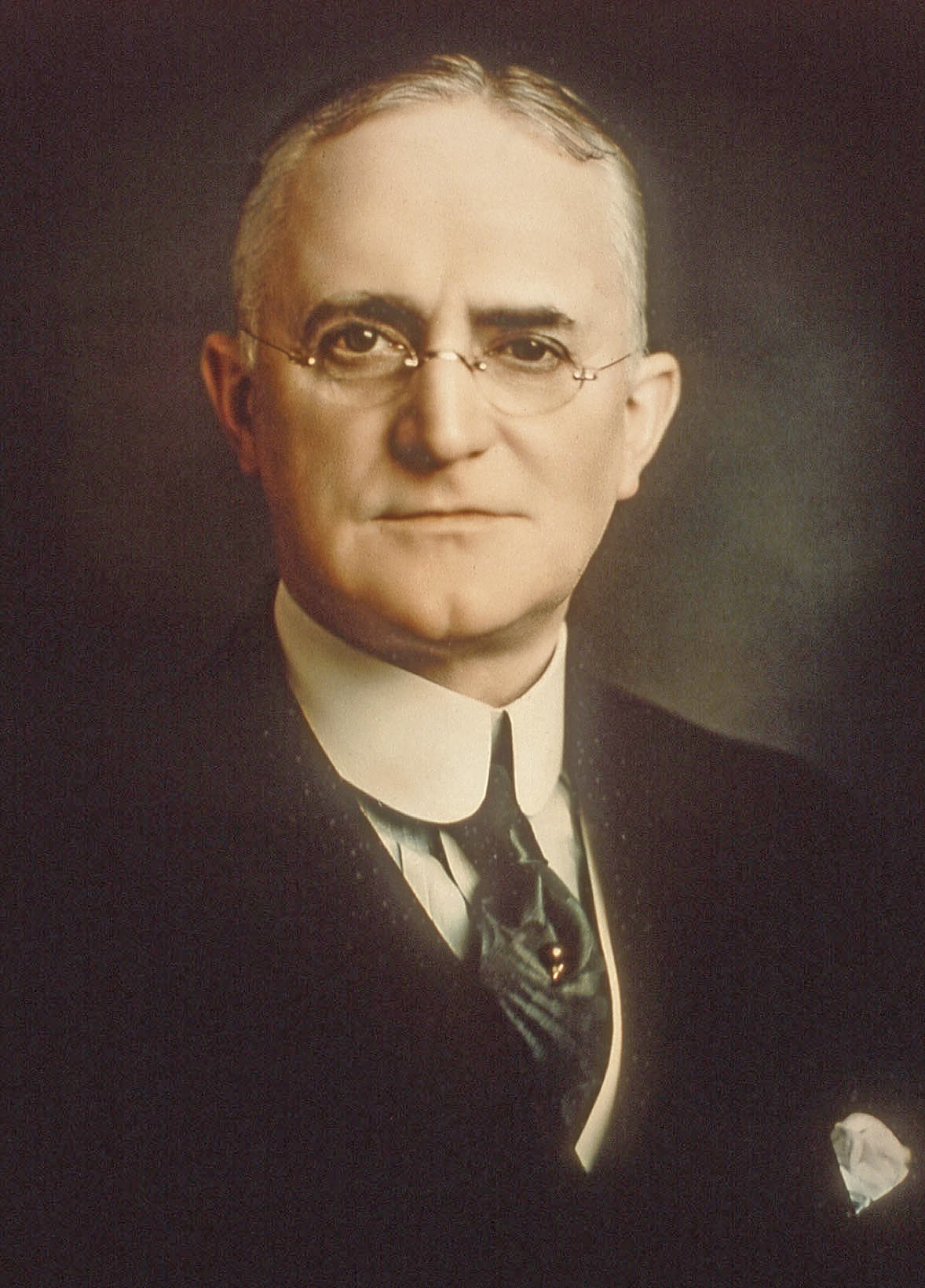
GEORGE EASTMAN
The late Mr. George Eastman. Born at Waterville, New York, in 1854, Mr. Eastman began life as a clerk. For his own convenience in camera work he composed an emulsion which was coated and dried on a glass plate. This proved a great improvement on the cumbersome wet-plate photograph, which was then in use. By 1878 he had started manufacturing dry plates. Then he set to work evolving a practical film, which he obtained only after much pain and trouble. By 1889 Kodaks were already in the market and December, 1891, saw the birth of the daylight Kodak. In the ensuing years his business grew tremendously, due to the increasing part photography was playing in the lives of people.
In post-war years he performed notable philanthropic work. Early in 1908 he concluded an agreement with Thomas Baker, senior partner of Baker and Rouse, of Australia, by which the company obtained valuable interests in Australasia.
1st July 1933 Page 295 - Vol. 40 No. 7 Australasian Photo-Review
CENTENARY OF THE DEATH OF NIEPCE
July 3rd, 1933, commemorates the centenary of the death of Joseph Nicephore Niepce, the first man to obtain a permanent photograph, and who was born at Chalons-sur-Saone on March 7th, 1765, and died at Gras on July 3rd, 1833. After having served a few years in the French Army, Niepce was compelled to resign on account of ill-health, when he returned to his home and devoted his time to scientific research, in which photography was included. In this respect Niepce turned his attention to the camera obscura, which was in use at the time, and set about to discover a process which would make pictures produced by this means to be permanent.
Niepce’s discovery cams under the notice of Jacques Mando Daguerre, who was also experimenting at the time in a similar process and who endeavored to secure the co operation of Niepce in his discoveries. Negotiations were at first unsuccessful, but on December 5th, 1829, these two signed an agreement of partnership providing that each would work to the mutual advantage of the other, and it is undoubtedly due to the efforts of these two workers that photography owes its existence. It is interesting to note in passing that the chemical used by these early workers in "fixing” their results was the well-known hyposulphite of soda, used for the same purpose to this day, and which was originally discovered by Sir John Herschel as far back as 1800.
JOSEPH NICÉPHORE NIÉPCE
DOB: 7th March 1765 Chalon-sur-Saône
Death: 5th July 1833 (aged 68) Saint-Loup-de-Varennes
Wednesday 27th September 1933 Page 6 - Newcastle Morning Herald and Miners' Advocate (NSW)
ALL PRIZES TO ONE MAN
Mr. Arthur Smith, of Villiers-avenue, Mortdale, Sydney, has the distinction of winning the whole of the prizes offered, as follows
Championship. A Prize of £5/5/: "The Hallowed Hour of Morning".
Class I: Early Morning, Late Afternoon or Early, Evening Study on Lake, Sea or River. First Prize of £3/3/: "Early Morning, Lake Macquarie", Second Prize of £1/1/: "The End of the Day, Lake Macquarie".
Class II: Scenic Pictures, including Nature Studies, First Prize of £3/3/: "The Breaking Wave", Second Prize of £1/I/: "In the Bush, Swansea".
The champion photograph was not eligible for any other award. The judges therefore awarded to the winner of Class I: "Early Morning, Lake Macquarie", the special prize of £1/1/ for the best photograph taken in the Newcastle and Maitland district.
Mr. Smith's, distinction will be the more appreciated when it is remembered that there were 67 entries for Class I and 92 entries for Class II.
The Editor had the assistance of three competent amateur photographers and art critics. Later the photographs were submitted to a Sydney authority with an Australian reputation and his views corresponded in the main with the independent agreement previously arrived at in Newcastle.
PICTURES TO BE EXHIBITED
The Management of the "Newcastle Morning Herald" announces that the entries in the competition will be exhibited on the second floor of the "Herald" building on Monday and Tuesday next, between the hours of 12.30pm and 4pm. Visitors are asked not to handle the photographs.
THE WINNING PHOTOGRAPHIC STUDIES IN THE "HERALD" CAMERA COMPETITION
Champion:
"THE HALLOWED HOUR OF MORNING"
Class 2: First Prize:
"THE BREAKING WAVE"
Class 1: First Prize:
"EARLY MORNING, LAKE MACQUARIE"
Class 2: Second Prize:
"IN THE BUSH, SWANSEA"
Class 1: Second Prize:
"THE END OF THE DAY, LAKE MACQUARIE"
COMMENTS BY THE JUDGES
The judges were in complete agreement as to the outstanding qualities, of the winning pictures. Asked to put their views on paper, they wrote - "The prize-winners were in a class almost of their own. In the championship photograph, "The Hallowed Hour of Morning", the general composition is outstanding and undoubtedly gives an impression of early morning mists. The tonal values are excellent. It is a photograph which is very difficult to criticize.
"Difficulty was found in separating "The Breaking Wave" and "In the Bush, Swansea" for first honors in Class II. "The Breaking Wave" shows skill and judgment, combined with artistic taste. It is a pleasing study, fine of action. The sky also helps the picture in every way. "In the Bush, Swansea" is a delightful bush study, the majestic trees in the foreground standing out in relief. The trees in the background have been portrayed in the proper tone values. Altogether it is a very interesting picture.
"Early Morning, Lake Macquarie" takes the honors in Class I and is judged the best picture in the Newcastle and Maitland district, excluding the champion. It is a pleasing study, the composition of the trees being particularly good and the tone values excellent. The whole scene is typical of early morning. The small timber in the foreground assists greatly in the general artistic effect. Attention is paid to the smallest detail. If the little jutting piece of timber on the right had pointed in the opposite direction some effect would have been lost. It is a fine study.
"The End of the Day, Lake Macquarie" shows good balance. If the tree had been in a different position the picture would have been spoiled. The lighting is particularly good.
Wednesday 27th September 1933 Page 6 - Newcastle Morning Herald and Miners' Advocate (NSW)
"HERALD" CAMERA STUDIES EXHIBITION
Keen interest has been shown during the past two days in the exhibition, at the office of the "Newcastle Morning Herald", of the photographs which were entered in the camera competition conducted recently. A large number of visitors have inspected the display, including several of the professional photographers of the district, who have been keenly appreciative of the merits of many of the studies. Mr. Arthur Smith, of Mortdale, Sydney, who, as already announced won the whole of the prizes in the various classifications, all with different photographs, as required by the conditions set for the competition, has written to the Editor in acknowledgment of the intimation of his success and expressed appreciation of the manner in which his photographs were reproduced in the "Newcastle Morning Herald" last Saturday. He said he hoped that the competition would give an impetus to photography in Newcastle. He paid a tribute to the fine scenery to be found around Newcastle. "For some years past", Mr. Smith wrote, "my holidays have been spent in Newcastle and Belmont and I have seen enough of the country round there to convince me that it is teeming with possibilities for the photographer and the artist. No camera worker need therefore despair who lives in your district, for he has subjects innumerable to choose from. I have seen sunsets at Belmont that were wonderful to behold and compositions in the bush around there that a sheer delight to look upon".
Saturday 27th January 1934 Page 22 - The Argus (Melbourne Victoria)
STREET PHOTOGRAPHERS
With the object of protecting pedestrians on city pavements against being annoyed by itinerant photographers, the traffic and building committee of the City Council decided this week to continue to prosecute offenders until the practice was abandoned. Several prosecutions are pending.
Saturday 9th June 1934 The Argus (Melbourne Victoria)
PIRATE PHOTOGRAPHERS
Determined to circumvent photographers who had exclusive rights to take pictures of the match, a "pirate" firm erected a scaffolding on top of a house adjoining the ground and placed long range cameras above netting erected to block their view.
Thursday 15th November 1934 Page 5 - The Argus (Melbourne Victoria)
AWARDS TO PHOTOGRAPHERS
Opening the Centenary International Exhibition of Professional Photography at the Athenaeum yesterday, Councilor Sir Harold Gengoult Smith recalled that it was just 100 years since Henry Fox Talbot had announced his discovery of photography. He was glad that, as the awards showed, Australian photographers were able to do well in competition with the finest photographers in the world.
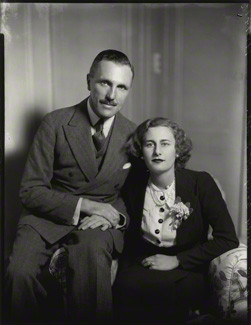
SIR (HAROLD) GENGOULT SMITH; CYNTHIA MARY (née Brookes), LADY SMITH
DOB 25 July 1890 East Melbourne, Victoria
Died 14 April 1983 Armadale, Melbourne, Victoria
LORD MAYOR of MELBOURNE
The following awards were made by the Judge (Mr. Harold Cazneaux) of medals presented by the Professional Photographers Association of Victoria:
PORTRAITURE |
PORTRAITURE |
PORTRAITURE |
||||
| Lady Jane by Max Habrecht (Detroit U.S.A.) |
The Head Man by John Scott Simmons (Melbourne) |
Ethelreda by J.Dorin (Chicago U.S.A.) |
The Cavalier by Monte Luke (Sydney NSW) |
W.O. Forsythe Esq. by Charles Aylett (Toronto, Canada) |
The Feather Boa by Dickenson-Monteath Studio (Melbourne) |
Wesley College by John Scott Simmons (Melbourne) |
PORTRAITURE |
COMMERCIAL |
|||||
| Field-Marshal Lord Milne by C. Stuart Tompkins (Camberwell) |
Llewellyn Powers Esq. by Wilfred Cumming (Weymouth, England) |
Maureen by Guttenberg Ltd (Manchester) |
Weidesmenn by Emil Synek (Melnik Czechoslovakia) |
Judge Bull as Lincoln by Robert Kohler (Milwaukee, U.S.A.) |
The Hat by Jack Cato (Melbourne) |
Records by Dickenson-Monteath Studio (Melbourne) |
COMMERCIAL |
OTHER SUBJECTS |
OTHER SUBJECTS |
OTHER SUBJECTS |
|||
| Bahnhof by Erno Vadas (Budapest, Hungary) |
Elon by Blakeslee-Klintworth (Florida U.S.A.) |
Seagulls by F. Schensky (Heligoland) |
Richness by Gannon Sjowall (Oslo, Norway) |
Melbourne Looking South-East by Dickenson-Monteath Studio (Melbourne) |
Determination and Confidence by Arthur N. Vieash (Perth, W.A.) |
Collie Puppies by Thomas Fall (London) |
The exhibition will remain open until November 24th.
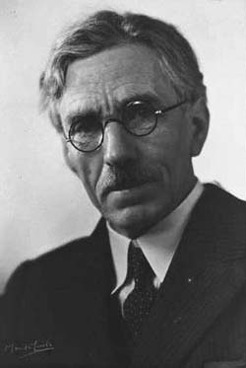
HAROLD PIERCE CAZNEAUX
Saturday 9th February 1935 Page 9 - Newcastle Morning Herald and Miners' Advocate (NSW)
WAS WITH SCOTT
Mr. HERBERT PONTING Dead
EMINENT PHOTOGRAPHER
LONDON, 7th February
The death has occurred of Mr. Herbert George Ponting, F.R.G.S., FRPS, F.Z.S.
Mr. Ponting, an eminent photographer, was a member of Captain Scott's last South Pole Expedition. He went to California in 1900 and was correspondent for "Leslie's Weekly", New York, with the American Army in the Philippines in 1901. He traveled around the world with his camera three times, won the highest, award for travel photography at the Dresden International Photographic Exhibition in 1909 for his photographs of Asia and had an invitation photographic exhibit in the Japan-British Exhibition the same year. His photographs of the Antarctic were exhibited at the Fine Art Society's gallery, London in 1913 and 1914 for 10 months. Mr. Ponting traveled in Japan for three years and was a correspondent for "Harper's Weekly", with the First Japanese Army in Manchuria during the war with Russia.
He was Photographic Officer to Captain Scott's last South Polar Expedition from 1910 to 1913 and he lectured, with a cinematograph, more than 1000 times about the expedition at the Philharmonic Hall, London and to the King and the Royal family at Buckingham Palace. In 1933 he completed the film, "Ninety Degrees South", the motion picture record of the Scott Expedition, synchronized with his story.
The expedition to the Antarctic, was not Mr. Ponting's only encounter with the Polar regions, for he was a member of the Spitzbergen Expedition in 1918. He was made an honorary life member of the American National Geographic Society in 1926. He was awarded the King George V. Polar medal, the Royal Geographic medal for Antarctic exploration and the Japanese medal for his part in the war between Russia and Japan. He contributed to numerous English and American magazines and periodicals and wrote the following books: "Fujisan", "Japanese Studies", "In Lotus-Land", "Japan" and "The Great White South".
Monday 26th August 1935 Page 4 - The Argus (Melbourne, Vic. )
ROMANCE OF KODAK
WHEN THE PHOTOGRAPHER NEEDED A CART
WORK OF EASTMAN AND BAKER
At a day when almost every family includes at least one amateur photographer, when many miles of photographic film are exposed in Victoria at every holiday season and when the amateur's complete outfit may be carried conveniently in the vest pocket, or in a woman's vanity-case, it is difficult to realize that half a century ago the landscape photographer had to have some kind of vehicle to transport his kit. Those were the days of the wet plate, when a cumbersome camera and tripod were essential and the glass plates on which the photographs were taken had to be sensitized in chemical baths immediately before use, exposed while they were wet and developed on the spot. A large light-proof tent and a complete equipment of chemicals and utensils for sensitizing the plate, developing it and fixing it, had to be carried on every photographing tour and an assistant was most desirable, if not indispensable.
Two men who were undismayed by such difficulties are remembered with the opening to-day of the new Kodak House in Collins street; one was Mr. Thomas Baker, who, as a young manufacturing chemist in Melbourne in 1875, began the manufacture of wet plates in Australia and the other was Mr. George Eastman, a young bank clerk in Rochester (U.S.A.), who became an amateur photographer in 1878. Mr. Baker made the plates; Mr. J.J. Rouse sold them and in 1888 they entered into partnership as Baker and Rouse, manufacturers of and dealers in photographic materials.
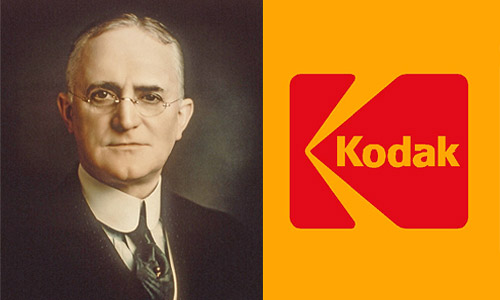
GEORGE EASTMAN
Born 12th July 1854 Waterville, New York, USA
Died 14th March 1932 Rochester, New York, USA
PHOTOGRAPHY PIONEER, FOUNDER OF EASTMAN KODAK
Meanwhile Mr. George Eastman, in the United States, became so consumed with his hobby that he left the bank and began to make photographic plates for himself. Dry plates replaced the old wet plate process and Eastman made such good dry plates that his business increased and the Eastman Dry Plate Co., with additional capital supplied by Mr. Henry A. Strong, who became Eastman's partner, became a thriving business. Eastman and his associates invented the roll film and the Kodak camera in which it might be used conveniently.
Baker and Rouse joined forces with the Eastman Kodak Co. in 1908 to form Kodak (Australasia). The Australian company has a huge factory at Abbotsford, where photographic films, plates and papers are made and mounts, albums and photographic chemicals are prepared. Chemical compounds of silver are the basis of photographic action and the Kodak works at Abbotsford use more silver annually than any other consumer in Australia,
KODAK HOUSE, Collins Street, Melbourne - 1935
Thursday 23rd January 1936 The Queenslander (Brisbane QLD)
FOR PHOTOGRAPHERS
In these days of films the dark slide is seldom seen in an amateur photographer's outfit; but there still is to be found here and there one who is old-fashioned enough to believe in plates and refuse to use anything else. One of the difficulties encountered by the plate user is that he forgets which slides have been used for exposing, although some operators avoid this by numbering the slides and exposing the plates in order. Even then it is not easy to remember, especially when there is hurry, which was the last number exposed.
This difficulty disappears if a piece of gummed paper, such as stamp margin, is stuck over the lower end of the cover of the slide, so as to overlap the frame. When placing the slide in the camera for exposure the thumb-nail is run through the paper at the joint. As the paper seal must be broken before the plate can be exposed, there can, therefore, be no doubt. The exposure and any other details may be recorded on the piece of paper remaining.
Thursday 1st April 1937 Page 6 - News (Adelaide, SA)
SCOUTS ARE KEEN PHOTOGRAPHERS
Immediately after he had wished the Australian Boy Scout coronation contingent bon voyage on Government House lawns today, the Governor (Sir Winston Dugan) was besieged by amateur photographers in the contingent. All sorts of cameras from tiny box cameras to movie cameras were produced from pockets and cases like magic and snaps were taken of His Excellency with Chief Commissioner Rymill. "Don't forget to send me a copy", jocularly remarked Sir Winston as he waved to the Scouts, whose three hearty cheers then echoed throughout Government House grounds.
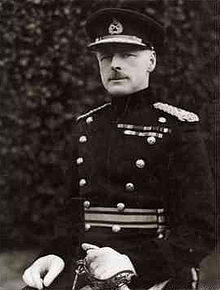
SIR WINSTON JOSEPH DUGAN
Born 3rd September 1876 Parsonstown, King's County, Ireland
Died 17 August 1951 (aged 74) Marylebone, London, England
21st GOVERNOR OF SOUTH AUSTRALIA
Monday 10th October 1938 Page 4 - The Courier-Mail (Brisbane, Qld)
GARDENS PHOTOGRAPHERS
J. Thoms wrote a letter to The Courier-Mail, which was published on October 4th. He alleged that during several visits to the Botanic Gardens he and his wife were followed by photographers, that he informed a photographer that neither himself nor his wife wished to be photographed and that as they were leaving they were again approached. To contend that visitors to the gardens are pestered by photographers is untrue and unfair. Because of Mr. Thoms's complaint permits have been canceled and men who have relied upon this form of work for years to earn a livelihood have been thrown out of employment. One is a returned soldier with four years service overseas; he has a wife and four children and now has been thrown on to half rations and half relief. I cannot stress too strongly the dilemma of these photographers, who over a period of years, have given a cheap and courteous service to people of Brisbane and tourists who wished to carry away with them a souvenir of their visit to Brisbane's Botanic Gardens.
Brisbane. E.R. CLARKE.
Friday 10th March 1939 Bunyip (Gawler, SA )
PHOTOGRAPHERS
Gawler people who visit the city have doubtless been snapped by street photographers, who present a tiny camera, aim with their eye and click the shutter. A move is being sponsored by business interests in Adelaide to keep them from the footpaths in the busy streets during hours when shoppers throng the pavements. It will be remembered that about a year ago, the City Council refused permission for a Victorian firm to operate cameras in the street. These picturesque figures of the pavement are a familiar sight in our streets and if they are removed, many people will miss them. But whether they care enough to take particular interest in their fate is another matter. If, as the business interests suggest, the shoppers are being inconvenienced, the city council will have no alternative but to act against photographers.
Tuesday 3rd December 1940 Page 10 - The Sydney Morning Herald (NSW)
STREET PHOTOGRAPHERS
The City Council has decided to review the position of street photographers, who now are liable to prosecution for infringement of city by-laws. The Works Committee of the council decided yesterday to obtain the advice of the City Solicitor on a proposal submitted by Alderman O'Dea that if prosecutions were to be launched persons on whose behalf photographs were taken as well as photographers should be prosecuted.
Saturday 14th December 1940 Page 1 - Mirror (Perth, WA)
SOCIETY PHOTOGRAPHER DIVORCED
One of Perth's most fashionable photographers, Harold Emil Axel Poignant, has many times peeped through his lens at a young couple just starting out on their voyage on the sea of matrimony.
No doubt the obvious happiness of the blushing bride and bridegroom must have many times reminded him of his own wedding in April, 1930. His venture, however, was far from a happy one.
His relations with his wife were allegedly very strained and they were broken altogether yesterday when the Chief Justice granted Sandra St. Lucien Eliot Poignant her divorce from her artistic husband.
Unique feature of the case was that neither party appeared. Mr. W.M. Byaes (for the wife) produced an affidavit signed by Mrs Poignant in Sydney. Respondent did not defend the proceedings.
After their marriage in 1930, read Mrs Poignant's evidence, they lived at Sydney, where her husband was a clerk on 2GB. Three months after the wedding, Poignant was dismissed and the wife went to work as a domestic. In August she became ill and came to W.A. for an operation, at her mother's expense. In November, she returned to N.S.W. and found her husband still out of work.
PURCHASED CAMERA
Shortly after her return he purchased a camera and equipment with borrowed money and set up a snapshot business. For its failure she blamed his laziness. From time to time money from the wife's mother was received and she was also working. When it was suggested to Poignant that he should try to find a regular job, alleged the wife, he would fly into a, terrible rage and tell her he preferred working on his own account.
October 1931 saw the not-so-happy couple in W.A. Early in 1932 he bought another camera and working with supplies obtained on his mother-in-law's credit, he once again set up a business as a photographer.
Although arguments arose between them, Mr. and Mrs Poignant continued to live together and his wife admitted in her affidavit that he was making a success of the business.
INTO A RAGE
Then she asked him to make a home for themselves, but he allegedly flew into a rage. After the death of her mother, his attitude grew worse and more violent. He would not ask for conjugal rights, she stated. In June, 1937, he left the house in West Perth and his wife obtained a separation through the Married Women's Court, under which an order was made for maintenance. About this time Mrs Poignant took a health trip to Sydney.
Since her arrival in Sydney in 1937, stated the wife, she has not received any money from her husband for her maintenance. She has supported herself on her own earnings and on her share of her deceased mother's estate, which is now all but exhausted. A decree nisi returnable in six months was granted.
Thursday 20th February 1941 The Daily News (Perth WA)
PHOTOGRAPHERS WARNED
Amateur and professional photographers are warned against photographing marches of troops and other subjects of a Navy, Army, or Air Force nature. The warning which was issued today at headquarters, Western Command, applies to all establishments and includes ceremonial marches. Under the National Security (General) Regulations, action may be taken to seize cameras and films and to inflict penalties on people taking photographs without special permission. At Western Command Headquarters, it was stated that it was realized that amateurs frequently took photographs of forbidden subjects or formed bodies of troops for their personal interest and not with any evil intention. It was not possible, however, for the authorities to discriminate easily between the two and it was, therefore, requested that particular attention should be given to this warning which, if unheeded, might lead to legal proceedings.
Saturday 7th June 1941 Page 4 - The Newcastle Sun (NSW)
Tuesday 1st July 1941 Page 4 - The Argus (Melbourne, Vic)
PHOTOGRAPHERS FINED
SYDNEY, Monday — Fourteen persons were fined 10/, with £1/9/ costs, in the Central Summons Court today for having taken photographs of vessels in harbor from decks of ferries. This is a breach of the National Security regulations.
Wednesday 9th July 1941 The Sydney Morning Herald (NSW)
FOOTPATH PHOTOGRAPHERS
The City Council's decision to license photographers on the city footpaths, though rather belated, should overcome a dilemma of some standing. For a considerable time the public or, at any rate, the female public-has shown its appreciation of the enterprise of these snap shooters, but under the city bylaws the latter were obstructing pedestrian traffic and for that reason numbers of them have from time to time been prosecuted and fined.
Whatever resentment against harsh authority may have been felt by the victimized ones, all those photographers who still offer their skill in more orthodox but less obtrusive fashion that is to say, in private studios - certainly did not share it. But the law's self-assertion was a failure for the fines did not diminish the number of offences; in fact the street trade grew and apparently prospered.
The City Council has now done the sensible thing in deciding to control what cannot be cured without Draconian severity and towards this end, to license the street photographers. With any real abuses of a privilege the Council should henceforth be able to deal more easily.
July 1942 Page 269 - The Australasian Photo-Review
AUSTRALIAN PICTORIALISTS SUCCEED IN “AMATEUR PHOTOGRAPHER” EMPIRE SALON
The issue of the Amateur Photographer of 1st April, contains the following list:
SILVER MEDALS: Keast Burke, Harold Cazneaux, J.B. Eaton, Dr. Julian Smith, F. Cole.
BRONZE MEDALS; J.P. Carney, E. Robertson, F.A. White, C.B. Young.
CERTIFICATES: G.L. Fisher, K.H. Harrington, Ainslie Roberts.
Monday 17th May 1943 Examiner (Launceston TAS)
PHOTOGRAPHERS DIFFICULTIES
Because of the requirements of the services, photographers, professional and amateur, have been hard hit by the shortage of films and paper.
A prominent amateur photographer said on Saturday that films and papers were procurable only in very small quantities. The number of professionals had declined, especially in country centers. The demand by branches of the defence services for materials had grown so extensively that distributors received only limited supplies. Film base and paper base have to be imported and transport is a big problem. Professionals have been rationed 50 per cent, on their 1940-41 quotas, but the amount of business available to them has become well over 100 per cent.
A member of the profession pointed out that nothing carried more sentiment than a photograph. That was why soldiers wanted to give their photographs to friends and vice versa and send them home to parents and relatives. The demand in this direction was very large. He appreciated the manner in which a Launceston firm had treated professionals within the scope of their supply.
Tuesday 18th May 1943 Page 1 - Newcastle Morning Herald and Miners' Advocate (NSW)
FRANCE PHOTOGRAPHED FROM BRITAIN
LONDON, 17th May
The "Daily Express" this morning prints two of the most remarkable pictures of the war. They are photographs of enemy territory taken from Britain. A special telescopic camera, 10ft. long, was set up on the cliffs near Dover and many exposures of two minutes each were made, using infra red plates. The resulting photographs, fitted together, made a panorama of 10 miles of the French coast, in which churches, houses, army huts and pill boxes, trenches and other German fortifications were clearly visible
Friday 4th June 1943 Page 6 - The West Australian (Perth, WA)
WAR PHOTOGRAPHERS - DAMIEN PARER'S RESIGNATION
Mr. Damien Parer, the well-known Australian war photographer, has tendered his resignation as a member of the staff of the Department of Information with which he has been associated for the past 3 years. Mr. Parer, who is 24 years of age, has already achieved considerable fame for his air photography in the New Guinea and SW Pacific war areas. His best-known films have been those descriptive of the Kokoda trail in New Guinea, the Bismarck Sea naval battle and Australian guerrilla fighters in Timor. The resignation of Mr. Parer, which was sent from New Guinea under date May 25th, was received by the Secretary of the Department of Information (Mr. R. Hawes) in Melbourne on Tuesday. Mr. Hawes said that Mr. Parer, who had given the requisite 3 months notice in accordance with his agreement, intimated that the resignation had been tendered because he was dissatisfied with his salary and the inadequate general and living expenses allowed by the Department of Information.
MINISTER'S REPLY
Replying to a statement by Mr. A. Parer, brother of Mr. Damien Parer, to the effect that the last-named was resigning because of the inefficiency within the Department of Information and inadequate equipment, the Minister for Information (Senator Ashley) said today that the equipment which had been made available, admittedly with some difficulty, to Department of Information newsreel men had enabled them to take films which had been shown throughout the Allied world and had been classed as outstanding among pictorial records of the war. The Department of Information had for 12 months been endeavoring to obtain new and additional equipment for its photographers through the United States and the United Kingdom. Photographers associated with American and British Press publicity organizations were similarly embarrassed at present.
STATEMENT BY Mr. CURTIN
Referring to the resignation of Mr. George Silk, a war photographer, from the Department of Information, the Prime Minister (Mr. Curtin) made the following statement today: "Mr. George Silk applied for accreditation with 'Life' while he was still licensed as a war photographer of the Department of Information and for this reason it is impossible for this application to be dealt with before his Department of Information license of accreditation has been canceled. Before Mr. Silk applied for accreditation with another organization he should have had his license canceled, but instead of making proper arrangements and representing his wishes fairly to the department he left Melbourne and flouted all ordinary procedure. "The secretary of the department informed him in Sydney that when it came to his knowledge that the reason for Mr. Silk's application for resignation was not illness, that before accreditation could be granted for his employment with another publicity organization it would be necessary for him to have a clearance from the Department of Information as an accredited war photographer. He was instructed to return to Melbourne immediately but he refused. "Public Relations of the Department of the Army, the accreditation authority, was advised of the position and requested to cancel Mr. Silk's Department of Information license of accreditation. Any further accreditation by Mr. Silk for affiliation with a particular journal or publicity organization will be for Public Relations of the Department of the Army and Allied Headquarters to decide on the basis of whether he is a fit and proper person to be accredited. This is the position in respect of all accredited correspondents and photographers".
August 1943 Page 314 - The Australasian Photo-Review
“AMATEUR PHOTOGRAPHER” OVERSEAS COMPETITION AUSTRALIAN AWARDS FOR 1942
(Extract from The Amateur Photographer, 31st March 1943)
It speaks well for the enthusiasm of amateur photographers all over the world that the entries in this year’s competition were as numerous as in previous war years and the standard of the work submitted remains of a high order. As was the case last year, club entries as such have dwindled, but many workers who have sent prints have stated to which society they belong. There were, for example, many excellent entries from South Australia, by members of the Adelaide Camera Club, but no club entry as such was sent. This was a pity and we hope that the Adelaide Camera Club will bear this in mind and send a collective entry for the current competition. The award for the best club entry once more goes to the Johannesburg Camera Club, from whom a good, all-round entry was received. The increased number of prints from Canada this year was encouraging.
As on previous occasions, the awards will take the form of Silver and Bronze Plaques and Certificates and are as follows:
SILVER PLAQUES: Harold Cazneaux, Clarence B. Young, Dr. Julian Smith, E. Robertson.
BRONZE PLAQUES: F.G. Crook-King, Keast Burke, John P. Carney, Keith McClure, F. Cole.
CERTIFICATES OF MERIT: Roy Dobbinson, F.A. White, John A. Shearer, Ainslie Roberts, J.W. Ikin.
Thursday 19th August 1943 Page 2 - Newcastle Morning Herald and Miners' Advocate (NSW)
DAMIEN PARER AS STRETCHER-BEARER
With Forward Troops in New Guinea. Putting aside his camera, Damien Parer, Australian war cameraman, whose film, "Kokoda Trail" and those of the Bismarck Sea Battle and Australian Commandos in Timor won renown, dashed into the battle on the ridge near Goodview Junction early this month to help carry a wounded A.I.F. man to safety.
Warrant Officer J.A. Fowler, of Tooronga (Victoria), said the Australians were attacking and the battle was getting tough, when there was a call for a stretcher-bearer. "Parer simply laid his camera aside and saying, "I'll give a hand", raced down the slope into the thick of the fighting. He got the man and then helped to carry him up the ridge". Fowler added: "When things were happening Parer was always right in there, taking pictures".
While on my way to the front, I met Parer on the track. He spoke of the magnificent fighting of our A.I.F. men and said he had taken some wonderful pictures of them. He did not mention his own experiences. But that is like Parer".
Monday 24th September 1945 Page 20 - The Argus (Melbourne, Vic.)
ALLIED PHOTOGRAPHERS ARRESTED
"With an Australian woman correspondent and a dozen official Army photographers, I have been detained in Pearl Hill gaol by order of Brigadier McKerron, chief civil affairs officer, after one of the most astonishing scenes any of us have seen since the liberating army went ashore", writes Frank Rostron, Sunday Express correspondent in Singapore. "We were arrested and our cameras were confiscated for taking pictures of the arrival of the Japanese Gestapo in the gaol yard after a five-mile march through Singapore streets". "The films we took should be screened throughout the world to show how these cowardly bullies snivel even under our gentle methods".
Monday 27th November 1945 Page 1 - Examiner (Launceston TAS)
PHOTOGRAPHERS NOW SHOOTING LEAD
LONDON (A.A.P.)
Four Australians, including a Launcestonian, Flt. Lt. Harold Panitzki, who formerly specialized in photographic "shots", are now showing that their firepower is as skillful as their camera work. They have just been transferred from a Mustang photographic reconnaissance unit to a Typhoon squadron in the Canadian wing of the R.A.F. Second Tactical Air Force. When photographing they had orders not to fight except in self defence, but occasionally they were allowed to beat up German vehicles. They are now taking heavy toll of railway targets on the Western Front and sometimes escort Typhoon bombers on important missions.
Thursday 20th December 1945 Page 2 - Portland Guardian (Victoria)
WORLD FAMED DOCTOR
One of the most noted photographers in the world is Dr. Julian Smith, of Melbourne. When, therefore, the Portland Camera Club, received word over the weekend through Dr Maling that this famous medico was sending a panel of twenty photographs for exhibition at the forthcoming salon, its members felt that such a contribution will put the exhibition on a plane equal to any salon exhibition to be seen in Australia and the success of the forthcoming salon in Portland is now doubly assured.
Saturday 15th June 1946 Page 5 - The World's News (Sydney, NSW)
CAMERAMAN DEFIES DEATH TO RECORD HISTORY
"I can stand just six more years of this — then I'll be all washed-up". That is how George Silk, one of the world's most famous news photographers sees himself. Known as "the man with a million lives", he has faced death on countless occasions to record contemporary history. As a war photographer George Silk was superb. His irrepressible grin and high-speed camera traveled the globe in search of news-worthy pictures. He dodged bullets in the opening campaigns in the Middle East, trudged through the horror of the Gona-Buna fighting with the AIF, was in the battles for Cassino, a passenger in one of the first gliders to set down in Southern France. He watched men die beside him as he joined the spearhead thrusting into Holland and capped his experiences of front-line soldiering by traveling to Hiroshima in the flying-boat, taking the first Allied party to Japan. Experiences like those, crammed into six years of war, have turned George Silk from an ordinary, young photographer's assistant into a weary man who, to use his own words, "can stand just six years more of it".
KIWI MAKES GOOD!
Silk was a photographer's assistant in Auckland, New Zealand, at the outbreak of war. He was sent to the Middle East by the Australian Department of Information and when the Japanese entered the war, returned to photograph the New Guinea campaign. He made his name famous when he went on a 750-mile trip through the Gona-Buna area, sharing every danger and hardship of the AIF and weighed down with cameras and cumbersome photographic material. But George Silk got little thanks from the Australian Government. Instead, he was offered a position by an American illustrated magazine, which boasts it has a team of 24 of the world's top news photographers. From New Guinea he went to Italy. He photographed the assaults on Cassino, the Anzo beach-head and the fall of Rome. On the morning of the assault on Southern France, Silk went in as a passenger in a glider. The glider hit anti-glider obstacles on landing and eight crew and passengers were killed. Silk alone got out. Two of his ribs were broken. After only two months convalescence, he joined the British Second Army in Holland, living in bomb-craters, dodging bullets and bombs, but always in the front line. He went in at Ardennes and when crossing the Roer River, two pieces of shrapnel finished his interest in the war in Europe. He told me: "I had to pull right out and I got back to the US about VE Day. After that I came across to do the Pacific. I was the first in at Hiroshima. Went there in a US Navy flying-boat. It was a jacked up deal. George Silk, the man with the magic camera. "It was pretty eerie and grim going in at first. I went without any idea of what the reaction of the people there was going to be. It was two days before the signing of the surrender and I thought the people might be pretty mad. I thought they might go us. "We were literally unarmed. There was only the crew of the flying-boat and myself, but I walked through the streets and went into the hospitals and talked to people about the effects of the bomb and they were quite indifferent". His magazine then sent him to Korea and he got to the Russians occupation zone. Of the Russians, he says: "They were very friendly indeed. They actually showed more interest in us than we did in them. There was very little conversation. At parties, it was mostly singing and drinking and hearty slaps. There were slaps that brought one to one's knees". From Korea he went to Shanghai to cover the surrender of the Japanese forces in China and the capture of war criminals. At Shanghai, worn out with the strain of chasing round the world, sharing the combined dangers of soldiers, sailors and airmen, civilians and merchant seamen, War Photographer Silk was unofficially demobbed, to substitute civilian assignments for his war duties. But today, the life of the "top-24" is little less strenuous than that of the war years. For the six years of "active" life that he reckons remain to him, Correspondent Silk will travel over the whole world, spending only days in one country, being rushed from New Zealand to Russia if news breaks there. His first peacetime assignment was typical — a flight from Shanghai to New Zealand to do a series of pictures his magazine wanted. He rings his head office in New York from New Zealand, from a ship at sea, or from Vladivostok as unconcernedly as the average person rings the butcher. He charters a special plane to fly across, Australia with the same abandon that he would call a taxi.
NO EXPENSE SPARED
George Silk knows and his employers know, that news today is the most precious commodity in the world. The expense of collecting it is beyond the power of the average person to realize, but in a profession where competition is most severe, huge costs must be faced up to. He is not completely finished with war. Civil war in Persia, rioting in India, an insurrection in China would send him rushing across the world to share the fighting, the dangers and the terror. It is because of that and because he knows that "peaceful" assignments can include photographing erupting volcanoes, train smashes and the mad scatter of tearing round the world on an endless chase, he sets a limit on his future useful life — just six years more.
GEORGE SILK
The man with the magic camera.
Thursday 3rd October 1946 Kalgoorlie Miner (West Australia)
PHOTOGRAPHERS BARRED
Nuremberg, October 1st — Despite protests from newspapers in Britain and America, the International Military Tribunal held to its original decision and refused to allow photographers in the courtroom while the prisoners were being sentenced. The tribunal's attitude was that it did not wish the court to be turned into a circus and would allow nothing that might impair the dignity of the court.
Thursday 3rd October 1946 The Argus (Melbourne VIC)
PHOTOGRAPHERS FINED
SYDNEY, Monday. Fourteen persons were fined 10/, with £1/9/ costs, in the Central Summons Court today for having taken photographs of vessels in harbor from decks of ferries. This is a breach of the National Security regulations.
Monday 23rd October 1950 page 3 - Newcastle Morning Herald and Miners' Advocate (NSW)
PHOTOGRAPHIC HONOR to AUSTRALIAN
BALTIMORE, 22nd October. A.A.P. Reuter
The Photographic Society of America awarded an associateship to Keast Burke, of George street, Sydney, in recognition of his outstanding ability and contribution to photography. Only seven associateships were awarded outside the United States from a total of 68.
Thursday 9th November 1950 page 3 - Kalgoorlie Miner (WA)
STREET PHOTOGRAPHERS
Perth, 7th November — The Perth City Council decided yesterday to ask the Minister for Local Government, Mr. Doney, to provide legislation for regulation and licensing of street photographers. It was said at the meeting that a letter had been received from the Commissioner of Police, Mr. J. Doyle, concerning complaints of discomfort and annoyance caused by photographers in city streets at night.
Thursday 9th November 1950 page 3 - Kalgoorlie Miner (WA)
SAW EUROPE WITH HER CAMERA
It was "unconventional" for a woman to take up commercial photography in England, said Miss Antonia Blaxland, who returned at the weekend from England and the Continent, where she has worked and traveled for nearly two years. Miss Blaxland, who studied photography with Max Dupain in Sydney, was a commercial photographer in England for five months with Mr. H.F.K. Henrion, a poster designer. Some of her work appeared in exhibitions at the Festival of Britain. The reason generally given for the lack of women in photography was that they are not strong enough to lift heavy weights such as lights, Miss Blaxland said. "This is just an excuse for not giving a job," she said. "The main reason is that it is just unconventional". Miss Blaxland took many photographs in Switzerland and Austria, where she spent a skiing holiday and in Italy.
Thursday 1st April 1954 page 10 - The Sydney Morning Herald (NSW)
LAST "SHOTS" TODAY AT THE QUEEN
When the Royal Yacht Gothic clears the "roads" off Fremantle to-day, thus ending the Royal tour of Australia, she will offer the last chance to scores of amateur and professional photographers to "shoot" the Royal visit to Australia.
Given fair weather, people with cameras will be on The Mole on Rottnest Island, on the ocean and in the air with super - speed panchromatic negative and ultra-fast lenses, filming the historic occasion as the Gothic dips to the Indian Ocean swell. Then, within a few hours, millions of people throughout the Commonwealth and in many parts of the world, will have a pictorial record of the send off at their breakfast tables, thanks to a combination of modern photography and photographic transmission methods. The art of photography has come a long way since Sir John Herschel first used the word "photography" when addressing the Royal Society in London on March 14th, 1839. Throughout Australia and New Zealand for three and a half months the Queen and the Duke have been "shot at" round 360 degrees and have taken it all admirably. Despite harsh lighting and many distractions, the Royal visitors gave the lens opportunists a great run for their money. No mere dilettante herself, the Queen has invariably had her serial camera at call and shown an aptitude for filming scenes that seized her interest so that she may share her experiences with her own family.
Queen Elizabeth turns photographer herself to get a
movie record of the Gothic's departure from Townsville.
The first of our monarchs to display a keen interest in photography was Queen Victoria. When David (later Sir David) Brewster first exhibited his improved "stereoscope" at the Crystal Palace Exposition in London in 1851, she became a "3-D fan," and Brewster's viewer became increasingly popular. Three years later Queen Victoria and Prince Albert attended the first, photographic exhibition of the London Photo Society. The Queen was said to be "enraptured" with Brewster's pictures (taken with his double-eyed binocular camera) of persons, flowers, objects of natural history and particularly of many statues in Edinburgh and the highlands of Scotland. In view of the Queen's great weakness for statues, she surrounded herself at Osborne, at Windsor and at Balmoral with countless pieces and monuments, one suspects the brilliant Brewster was also a canny Scot. The Prince Consort became patron of the Photographic Society of Scotland in 1856, when Brewster became its first president. Yet it took the Queen 40 years after her "first photo rapture" before she granted the prefix Royal to the Photographic Society of Great Britain. This was in 1894 and Sir David did not live to hear of it.
Queen Victoria was "enraptured" by the first
photographic exhibition just 100 years ago.
The first sign of consternation in the Royal Family about photography came with Victoria's great-grandson, David, who wrote to his papa: "There were a great many photographers at the Gare du Nord (in Paris) and they let off a flash powder as I was getting off the train, which was very disconcerting. They are a great nuisance and there were ten on board the (Channel) steamer and they followed one about the whole time". There is a suggestion, in that letter, of life in cloistered groves. The 18 year old Prince of Wales, on his first visit to Paris, found it strange to have "no reprieve from the Press". Certainly in the mind of the young Prince there was no evidence of the aplomb of his grandfather, King Edward VII, of whom the Duke was to write in his memoirs: "Few men could match his vitality, his sheer 'joie de vivre'. The Parisian term, "un bon boulevardier", might have been invented for him". In the same memoirs, the Prince (who became briefly Edward VIII), wrote: "I grew up before the age of the flash camera, when newspapers still employed large staffs of artists to depict the daily events with pen sketches. This artistic form of illustration seldom achieved the harsh or cruel accuracy of the camera lens, nor could it match the volume and mobility of the present-day photographer, dogging his often unsuspecting victim or waiting in ambush for a candid shot". This makes odd reading for many and in particular for one who recalls a brilliant June holiday in Sydney in 1920. On that day I blithely waltzed into a spacious, attractive atelier off deserted Pitt Street to come suddenly upon two handsome young men, completely relaxed, toying with a morning aperitif. The slim-waisted one clamped his black cigarette-holder between his fine teeth and screwed up his eyes at the intruder. It was the Prince of Wales, who relaxed immediately the portrait artist, Monty Luke, exclaimed: "When the devil did you return and what the deuce brings you here this day and hour?" The debonair, photogenic Prince had posed a dozen "takes" for the amiable, astute Luke and one left with the indelible impression that he was a camera artist's "natural" who knew his angles and lighting - and liked it! However much the now much photographed Duke of Windsor regrets the "disappearance of privacy since the days of my boyhood", he is not in accord with the facts.
This picture of the Duke of Windsor, when Prince of Wales,
is recalled by a reference in this article to the Duke's
visit to Sydney in 1920.
Photography's link with the Press dates back 40 years before his birth - to Paul Pretsch in 1854. Stephen H. Horgan introduced a process for half-tone newspaper printing about 30 years later, when, as staff photographer on the "New York Daily Graphic", his paper printed - on March 4th, 1880 - a portrait of Henry J. Newton, president of the American Institute and "a scene in Shantytown, N.Y." Modern cross-line screening, on glass, for making half-tone negatives came from Frederick Eugene Ives in 1886. Since then photography has been perfected so that today, allied to wireless transmission across continents and to high speed printing presses, we are able, at our breakfast tables, to see graphic illustrations, whether it be the previous night's air crash tens of thousands of miles away, or yesterday's racing at Royal Ascot, England.
POOR SHOW
The first photograph was taken by Nicephore Niepce in 1826. The exposure for this photograph, taken on a sunny day, was about eight hours at f/11. Technically, photography has advanced a very long way since then, but judging from the current photographic exhibition in the Monaro Mall, one would question whether it has advanced in any other direction.
Photographs of potter's hands, sheep at bay, misty landscapes, ripples on water, cute children, and 'mood portraits' are photographic cliches which do not deserve exhibition space, and no amount of excellence of printing, mounting, or presentation can alter this fact.
Amateur photographers generally are free from commercial photographic pressures and should be able to experiment freely with new ideas. But neither experimentation nor newness seems to have occurred to most of the exhibitors, their style of work ren----- firmly grounded in the 19--'s though serious amateur photographers are in a position to be showing the way to all photographers, it seems to me that there is more photographic trail-blazing being done by commercial fashion photographers, and more real appreciation of the pictorial value of photographs by Press photographers than there is in most of the work shown in Australian exhibitions.
Photographic exhibitions should be demonstrating imagination and a sense of adventure in photography. The current Mall exhibition is sadly lacking in these.
TED RICHARDS
Manuka.
Wednesday 21st October 1970 Page 2 - The Canberra Times (ACT)
I take great exception to Mr T. Richards letter of October 15th. Mr Richards should not judge all amateur photographers by the Monaro Mall photographic exhibition. I have seen some of the prints which have been rejected at this and previous exhibitions, and at the risk of sounding like a disgruntled competitor, I believe them to be of far better quality than most of those exhibited.
Camera clubs organize such exhibitions and dominate the Australian photographic magazines. These clubs have very fixed ideas of what is or is not a good photo. I do not know whether there is a rule book existing somewhere entitled, perhaps, "Articles of Faith of All Good Photographers", but, listening to some of the comments passed in club meetings, I strongly suspect there must be.
Some very exciting things are happening in photography in various parts of the world, but looking at exhibitions like this one, no one could ever be aware of it.
What is the serious young photographer, young in photography but not necessarily in years, to do? Photography, like any art form, is a medium of communication so the photographer must have an audience to communicate with. He wants to mix with other photographers, see other photographs, influence and be influenced. So in his innocence he may join a camera club and submit prints for exhibitions. There, to his surprise, he finds that originality and imagination are not advantages in the camera club world. They are liabilities. He must obtain only the qualities of being able to produce a technically perfect print, beautifully mounted, and conforming to a very strict set of laws. Only when he has mastered this "art" is he allowed to play with the big boys.
So either he follows his own way, continues to submit prints which are rarely if ever exhibited or he gives up the unequal task and produces prints for himself. Both ways, in time, can lead only to a sense of complete futility.
I don't believe that the camera clubs and photographic exhibitions as run by the clubs can ever be changed. They are mutual admiration societies which exist because their members can become all like each other. That I think was the most depressing thing about the exhibition, most of the prints were so very alike. What is needed, and maybe Mr Richards or other concerned professionals could do something about it, is for an exhibition to be organized for serious photographers, amateur or professional, to display their work with no judge of what should or should not be displayed. Or if it is entirely necessary to have a judging of prints for display then let it be done by a panel of people, not photographers, having some artistic appreciation. And I mean an exhibition, not a competition.
The person or group possessing the interest and ability, to do this, would be doing a great service to photography, photographers and to the general public. But rest assured it will not be done by the existing camera clubs.
FRANK MARTIN,
Queanbeyan.
Monday 2nd November 1970 Page 2 - The Canberra Times (ACT)
The Monaro Mall photographic exhibition is viewed by more non-photographers than experts so pretty pictures are bound to be preferred by the organizers. To look for trail-blazing examples of photographic art there seems futile.
If Mr Martin (Letters, October 21st) and other photographers find that camera clubs discourage originality and imagination, and that high quality work is being rejected in exhibitions, I suggest that they will find membership in the Australian Portfolio Photographic Society more congenial. Working groups of about 12 members operate, special interest groups are set up when enough members are available, and an experimental group has operated for some years. Emphasis is on friendship, constructive criticism, and exchange of ideas.
The general secretary is Mr Alex Brown, Glenmore Road, Paddington, NSW. Also, I would be happy to pass on general information.
A.L. RICHARDSON
Sunday 24th December 1978 page 9 - The Canberra Times (ACT)
A QUIET RECORDER OF OUR PAST
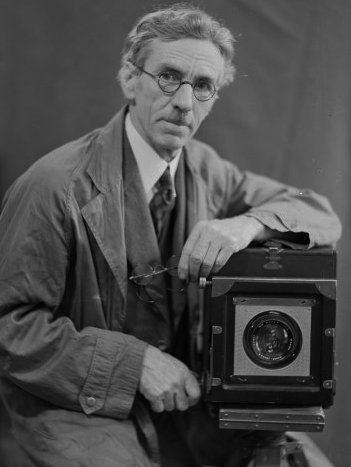
CAZNEAUX: Photographs by Harold Cazneaux 1878-1953. Selected and with an appreciation by Max Dupain. National Library of Australia.
Reviewer: TONY MANIATY
The saga of Australia's cultural isolation — that curious warp of time and distance — is not confined to the typewriter, the paintbrush or the stage.
In photography too, we have long suffered a history of delayed exposure to what is happening overseas. When ideas and images eventually arrive, they are usually worshiped like beacons of truth. There are few Australian photographic heroes.
For many, Harold Cazneaux was the first contender. Born across the Tasman 100 years ago, he purchased his original quarter-plate box camera in Sydney at the turn of this century and until the 1950s was refining his skills behind the lens. The result is well reproduced in this fine National Library edition: a selection of 85 images and an "appreciation" by fellow photographer Max Dupain of Cazneaux's life, a chronological essay that tells a lot about Australia's early cultural years.
In a creative sense, it sounds depressing.
"Think of the turbulence of thought and action that hammered out the theories of Post Impressionism and Cubism in Cazneaux's young days and the later dynamic theories of Dada and Surrealism in both painting and literature. What had we in Australia reflecting these movements, in art or anything else? Practically nothing. In photography we were still tied to the conventions of the old portrait studies with fake and phoney atmospheres, old cameras, head-rests and stuffed animals for the kids — even Red Riding Hood's wolf! What a ghastly and depressing environment for Cazneaux's creative soul. It drove him to a physical and nervous collapse".
It was a familiar story. There was virtually no chance in those days of specializing in any single field — home portraits, industrial shots, architectural work and magazine photography were Cazneaux's lot. Overseas, counterparts like Steiglitz were displaying at New York's Photo-Secession Gallery the new work of the Cubists, the Fauves, Picasso and other revolutionary painters and sculptors.
For all this isolation, Cazneaux's work is a landmark in Australian photography. With the untested optimism that filled this country once, he challenged the inherited English perceptions of what photography should be and changed as he went. Gradually the dreamy, deliberate and self-conscious aspects of his portfolio gave way to strong images of a young nation: the powerful surge of a wave bearing Sydney surfers in 1929, the industrial muscle of BHP's Newcastle steelworks in 1934 and surveying Sydney's new bridge and harbor life from a dizzying height. These were the raw symbols of power and independence and if they have perhaps failed us now, they are important for that too. Cazneaux caught that mood.
In portraits and landscapes, he was less successful, both combining and confusing modern realism with some lingering nostalgia. His gum trees curl harshly under a veneer of prettiness and the faces of proud, independent women are sometimes finished with a painter's dreamy touch. Cazneaux was regarded in his own time as an outstanding photographer of people and the Australian bush, but when we try to reappraise that success, the artist's intentions are clouded as always by time and passing fashions. We judge from the current photographic perspective and as Dupain notes, what concerns us today is "the commonplace, the rational, the actual, the objective, the remorseless presentation of any act of life. Maybe this is what photography is all about. We will not be certain for another hundred years".
For now, an impossible gap exists between the gentle art of Cazneaux's prints and the aggressive photojournalism of today. His camera was the quiet recorder of Australia's social past and its natural history. "Let us all go forward doing our work sincerely and soundly", he once wrote. "The results will speak for themselves". To say the results are of national importance gives Cazneaux's photographs a stuffy grandeur they fortunately lack, but our common history is certainly there.
Sunday 8th April 1979 page 19 - The Canberra Times (ACT)
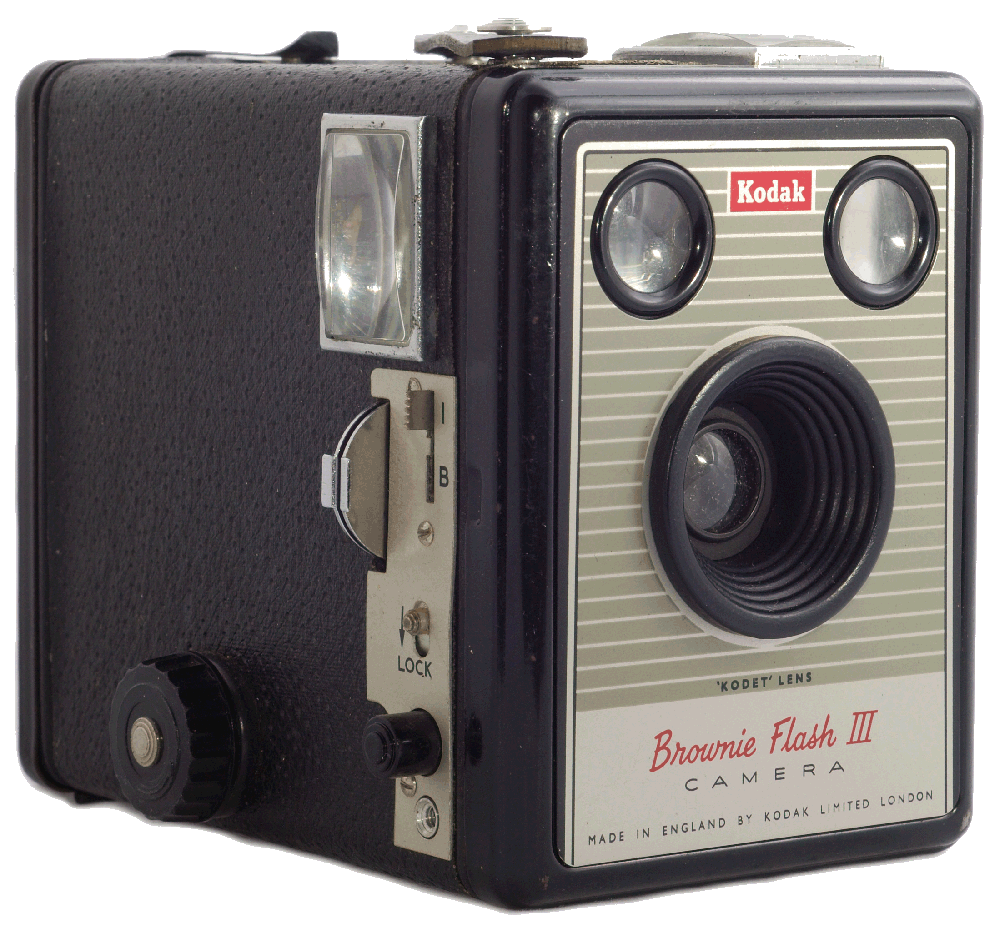
KODAK CLICK FIRST SOUND FOR MANY
The sound of photography to millions of sharp shooters was the distinct 'click' of a Kodak Brownie camera.
The first such camera was placed on the market in 1900. It was priced at $1 and used black and-white film which sold for 15 cents a roll. For the first time, the hobby of photography was within the financial reach of everyone. Many different models were introduced right up to the 1960's incorporating many new features such as a coupled flash unit.
In 1904 a folding Pocket Brownie camera was introduced which was less bulky than the box camera. It used 120 roll film, still available today and took pictures 5.5x8.2cm. In 1915 the name autographic was added to the title of the camera. By using special film it was possible to open the flap over a long slit on the back of the camera and to write places and dates on the back of the film alongside each photograph. Such models, although not worth a fortune, are being eagerly sought today by camera collectors.
Before World War I a Brownie camera which took stereoscopic pictures was available. Every scene was photographed simultaneously through two separate lenses. The resulting negatives were printed as a pair side-by-side and viewed through a special 3D Viewer.
At different times Brownie cameras with colorful coverings in red, green and blue were introduced. And there was a Baby Brownie camera in 1934. It used 127 film. Thousands of Brownie cameras were introduced specially for the New York World's Fair in 1939 and just before this time there was the Boy Scout Brownie camera. Kodak introduced a plethora of Brownie cameras in the post World War II era with names like the Target, the Six Sixteen, the Holiday, the Bullet and the Bulls-eye.
When the basic film quality improved it was possible to get enlarged prints from small negatives which equaled the quality of larger negatives which had to be made using larger, bulkier cameras. The same principle holds good today.
In 1956 the Brownie Starlet camera was introduced which took pictures 4.0x4.0cm on 127 film. It preceded a whole range of Brownie Starflex, Starmite, Starmeter, Starflash and Starmatic cameras.
In 1958 Kodak started to make cameras in Australia at a factory at Abbotsford. The factory transferred to Coburg in 1963 and by 1965 one million cameras had been produced. The majority of these were Brownie Flash II and Brownie Starmite cameras but the figure also included Instamatic cameras which had been introduced a year earlier. In fact it was the Instamatic cameras with their much-simplified cartridge loading which spelled the end of the Brownie cameras which used roll-films.
Now, nearly 80 years after the first Kodak Brownie camera was introduced, the name is being revived once more.
The new Brownie camera is an up to-the-minute camera using cartridges of 110 size film. The tiny negatives it makes are 13x10mm, about the size of a fingernail. That is a reduction of nearly one seventieth of the negatives made by early Brownie cameras and the final prints are better. The new camera can take black and-white pictures but most snap shooters will want color prints. The cartridges of Kodacolor II film it uses give 12 or 20 negatives which are made into 9x11.5cm color prints.
Unlike the early Brownie cameras, the new one takes pictures in doors easily with the aid of a flip flash. For dim weather conditions or for greater flash range it's possible to use Kodacolor 400 film. This very sensitive color film is 50 times faster than the first color print films introduced nearly thirty years ago.
Wednesday 3rd June 1981 page 25 - The Australian Women's Weekly (Sydney NSW)
A FIRST FOR WOMEN PHOTOGRAPHERS IN AUSTRALIA
QUICK THINKING AND LADDERS GOT THE TOP SHOTS
Adelie Hurley will never forget the night Katharine Hepburn arrived in town.
A crowd of Press photographers were at Sydney's plush Australia Hotel to record the event and Adelie, Australia's first woman Press photographer was there, trying to get in. The management refused Adelie admittance. She was wearing slacks - not the done thing at a posh pub in post-war Sydney. Livid, Adelie phoned the star in her suite. "Really?" Miss Hepburn exclaimed and strode briskly down to meet the hotel management. "I was the second woman allowed into the Australia wearing slacks", Adelie recalled proudly. "Katharine Hepburn was the first!"
The first work by Adelie, daughter of explorer, photographer and author Captain Frank Hurley, was published in the Sydney "Daily Telegraph" in the 1940s. She quickly established a reputation as "Front Page Hurley" because of her many photographic scoops. Her Press work is included in the first exhibition of photography by Australian women, which opens at the George Paton Gallery, Melbourne, on the night of June 1. The year-long exhibition, featuring the work of 26 women photographers (1860 to 1950), will tour Victoria, Tasmania, Queensland, SA and NSW. Some of the earliest photographs were taken by Norfolk Island missionary Kate Ivens in 1868. Also represented are May and Minna Moore, whose work is in the collection of the State Library of Victoria and who specialized in portraits of theatrical celebrities and young men departing for war and Bernice Agar, who had her own studio in Sydney's Castlereagh Street in the 1920s and took elegant photographs of society women. Lillian Pitts, a schoolteacher and hobby photographer from Merrigum, Victoria, recorded (mainly humorously) country town life . . . women in stiff starched dresses, parasols held high, sitting primly in jalopies with flat tyres. By Adelie Hurley . . . trading her camera for life by the beach. contrast there is Adelie's work. She once stowed away on an overland troop convoy to get to Darwin in the early days of World War II.
She was discovered and dumped at a homestead. Undaunted, Adelie hitchhiked to Darwin, disguised herself as a soldier, sneaked into army camps, shot a series of photographs and got them back to her newspaper. Quick thinking and ladders - helped her achieve several notable scoops. She climbed a ladder to a floor above a Sydney Chinese laundry to take pictures of a police raid on an opium den. Adelie took her ladder along to photograph pianist Winnie Atwell. She waited until the men photographers had left, climbed her ladder and took a much-admired looking-down shot of the star looking up. Another person asked to "look up" for Adelie was Sir Robert Menzies. He was on a visit to Cairns and hacked at sugar cane as a gesture for the Press. Menzies chuckled, obliging. "Are you as good as your father?" he asked. "Almost," Adelie replied.
Adelie slogged at everything from fashion to football; the initial skepticism of male colleagues gave way to grudging admiration. She worked for "AM" magazine, "Truth" and the "Mirror" and for The Weekly where she became the first woman photographer to go to sea with the Australian Navy. But it was for her outback work that Adelie became well known. Today her old workhorse, the Linhoff tripod, rarely gets an airing. For the past few years Adelie (her father named her after the Adelie penguins of the Antarctic) and her husband Phil Harrison have managed the Island Reef resort out of Bowen, Queensland. She now prefers painting to photography. She remains critical of the photography in newspapers today. "Despite all the new-fangled garbage that photographers clutter themselves with, I don't think I've ever seen so many flat and static pictures and so many ugly pictures of pretty girls. The challenge to turn in something better and different seems to have gone".
Saturday 29th January 1994 page 49 - The Canberra Times (ACT)

AN ARTIST WHO RAISED PROFESSIONAL LEVELS - PHOTOGRAPHY
By Helen Ennis
HAROLD CAZNEAUX dominated the photographic scene in Australia between the wars and was recognized as the country's leading pictorial photographer.
But his influence was not confined to photographic circles. He reached a large audience through his work for the fashionable magazine, The Home, in the 1920s and early 1930s. Issues of the magazine were peppered with photographs simply identified by the signature "Cazneaux". His career began in 1896 when, at the age of 18, he entered the photographic studio of Hammer & Co in Adelaide as an artist re-toucher. He moved to Sydney in 1904 where he worked at Freeman & Co, one of the oldest and most highly regarded photographic studios in Australia. Though a highly competent and conscientious studio photographer, Cazneaux was frustrated by the demands of the studio system. His real interest was in the use of photography as a medium of artistic expression. Following a physical and nervous collapse brought on by overwork and stress, Cazneaux left Freeman's in 1917 and established his own business.
Shortly after, he set up a studio at the family home in Roseville, on Sydney's North Shore. It was there, in the garden studio, that he worked until the end of his life. Cazneaux's family was closely involved with his photographic activities: his daughters often appeared in his photographs and later, worked as assistants in the studio. An enormously versatile photographer, Cazneaux mastered the areas of portraiture, city views and landscapes. During his first years in Sydney, Cazneaux took hundreds of negatives of Sydney's streets and waterways. He was particularly interested in the picturesque elements of old Sydney which were fast disappearing. Modern Sydney also captured his imagination and he extensively photographed the Sydney Harbour bridge, the very epitome of progress to Australians at the time.
His portraits were prized for their naturalness. Subjects adopted less artificial poses and were photographed in natural light. As Cazneaux saw it, sunlight had a crucial role to play in the development of a "national character". Towards the end of his career Cazneaux concentrated on photographs of the landscape, especially the Flinders Ranges. For Cazneaux, the negatives provided only the raw material. He used a variety of techniques for expressive effects: manipulation of the negative (for, example, by smoking it or drawing on it); radical cropping and different printing processes. He excelled at the production of bromoils which allowed him to modify the sharp definition of the negative and eliminate unwanted detail.
Harold Cazneaux died in his sleep in 1953 at the age of 75. In his various activities he raised the standards of Australian photography to a new level of professionalism, ensuring that it was worthy of sustained and serious attention. This is an edited extract from Helen Ennis's introduction to the book, Harold Cazneaux, The Quiet Observer.
JOHN CYRIL CATO
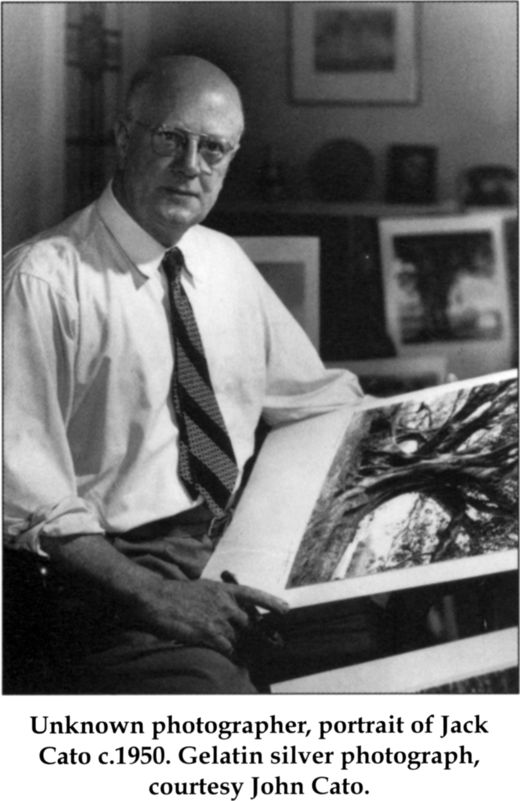
JOHN CYRIL "JACK" CATO FRPS
Born 4th April 1889 Launceston, Tasmania
Died 14th August 1971 (aged 85) Melbourne, Australia
PHOTOGRAPHER and AUTHOR
John Cyril "Jack" Cato FRPS, was a significant Australian portrait photographer in the Pictorialist style, operating in the first half of the twentieth century. He was the author of the first history of Australian photography; The Story of the Camera in Australia (1955).
John Cyril (Jack) Cato, photographer, son of Albert Cox Cato, salesman and his wife Caroline Louise, née Morgan. At the age of 12 years he did an apprenticeship and studied arts in night school. His father arranged for him to have lessons from a friend who was a metallurgist at Queenstown, where he learnt the properties of metals in photography. John Watt Beattie, a Scottish landscape photographer and also the son of a photographer, introduced young Jack to the medium in 1896. He was further trained in art by Lucien Deschaineux at Launceston Technical School. From 1901 Cato worked under Percy Whitelaw and John Andrew, both local portrait photographers.
In 1906, aged 17, Cato joined Beattie in his Hobart premises and set up his own studio. Later he applied to be official photographer to (Sir) Douglas Mawson's 1911 Australasian Antarctic Expedition. However, Mawson passed him up and Henri Mallard, in favor of Frank Hurley. Cato traveled that year in Europe finding work with photographers in London, among them H. Walter Barnett, the fashionable society and vice-regal portraitist and theatre photographer Claude Harris. Through the latter and with encouragement from Dame Nellie Melba, he pursued freelance work in the theatrical world. Having contracted tuberculosis and seeking the relief of a warm climate, Cato left England in 1914 to photograph on the expeditions in Rhodesia of Professor Cory of Grahamstown University. He enlisted for war service in South Africa. The anthropological photography earned him a fellowship (1917) of the Royal Photographic Society of Great Britain.
In 1920 Cato returned, still convalescing, to Tasmania, where he operated his own portrait-studio in Hobart and there married Mary Boote Pearce (d.1970) on 24 December 1921. He was President of the Tasmanian Photographers Association in 1923. In 1926 their son John was born and in 1927 they moved to Melbourne. Again with the patronage of Dame Nellie Melba and through her introductions to society and to theatrical circles, he set up a society portrait studio, first at 244 Collins Street, then permanently in Marcus R. Barlow's (1930) Art Deco Howey House at 259 Collins Street. There, he was conveniently located for clients, close to Melbourne's photographic community and the best department stores and boutiques around Collins Street, Melbourne. He put his Pictorialist style, natural gregariousness, love of theatre and technical knowledge to effect in becoming a leader of the trade in Melbourne for two decades.
His society, theatre and advertising photographs were frequently published in magazines and newspapers including The Australian Women's Weekly, The Argus, Table Talk, The Illustrated Tasmanian Mail, The Hobart Mercury and The Australasian. He maintained links with professional associations and amateur clubs through occasional exhibitions of his best work and was senior vice-president (1938) and a life member of the Professional Photographers Association.
Cato retired from his Melbourne studio in 1946 to begin a career as an author. In addition to a large number of articles in photographic, philatelic and other magazines, as well as serving as chronicler for the Savage Club, he published an autobiography, I Can Take It (1947) and a pictorial documentary, Melbourne (1949).
THE STORY OF THE CAMERA IN AUSTRALIA
Cato's The Story of the Camera in Australia (1955), though it is more populist than academic, is acknowledged as the first Australian national history of the medium. A keen stamp-collector from childhood (also 1935 president of the Royal Philatelic Society of Victoria) he was able to sell his stamps for about £10,000 in 1954 to finance six years of research for this book. He used the La Trobe Library picture and newspaper collections in Melbourne, making only one visit to Sydney and Canberra institutions. Cato also relied on regular personal correspondence with experts, such as letters from Harold Cazneaux, the celebrated Pictorialist and from Keast Burke in Sydney, a photography historian and campaigner for the recognition of photography as a historical resource and who was engaged in 1964 as consultant to the collections at the Australian National Library.
From 1960–63 Cato was photography columnist for The Age newspaper in Melbourne. He died on 14 August 1971 at Sandringham, Melbourne, survived by a son, photographer John Cato and a daughter.
- 2002 Included in exhibition Just Married, Monash Gallery of Art, Wheelers Hill, 6 September-20 October 2002
- 1995 Included posthumously with Athol Shmith, Harold Cazneaux, John Lee, Laurence Le Guay and Max Dupain in National Portrait Gallery curated exhibition High Society: Society Portraiture and Photographs
- 1938 Queen Victoria Museum Art Gallery, Launceston
- 1937 Group Show of early Kodachromes at Kodak (Australasia) Pty. Ltd., 45 Elizabeth St., Hobart
- 1936 Group Show Kodak (A'Asia) Pty. Ltd. Gallery, Collins Street, Melbourne
- 1934 Group show Centenary International Exhibition of Professional Photography, Athenæum Gallery, Melbourne. Awarded Silver Medal in Commercial section
- 1932 Solo Show, Athenaeum Gallery
- 1925 Solo Show of landscapes, The Bookshelf Gallery, Hobart
- 1923 Group Show of the Professional Photographers' Association of Tasmania, Hobart
OLEGAS TRUCHANAS
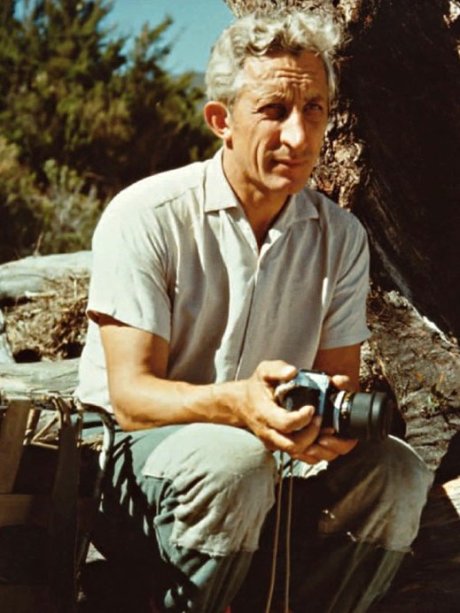
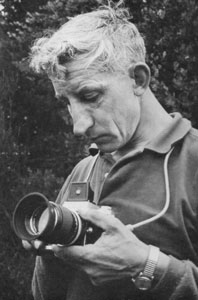
Birth 22nd September 1923 Siauliai, Lithuania
Death 6th January 1972 Gordon River, Tasmania, Australia
Olegas Truchanas, wilderness photographer and conservationist, was son of Eduard Truchan, civil servant and his wife Tatjana, née Bronovickaja-Baronenko. During World War II Oleg was active in the Lithuanian resistance. He went to Germany in 1944 and began law studies at the University of Munich. After the university closed temporarily in May 1945 he moved to the Baltic displaced persons camp at Garmisch. On 23rd February 1949 he arrived in Melbourne in the Nea Hellas. Sent initially to the Bonegilla migrant reception center in Victoria, he chose to go to Tasmania where he was assigned to manual labor for the Electrolytic Zinc Co. of Australasia Ltd, Risdon. In 1951 he joined the Hydro-Electric Commission, Hobart, as a meter-reader. Becoming an engineering clerk two years later, he was to work in the area of statistical analysis until 1971.
Deeply attracted to Tasmania's wilderness areas, Truchanas undertook many solitary excursions, on foot and by canoe, into the island's south-west. Black and white and later, color photography became the medium through which he expressed his considerable artistic talents; he won prizes in overseas and Australian competitions. In 1952, climbing alone and without support, he reached the summit of Federation Peak. Twice, in December 1954 and February 1958, he traveled down the Serpentine and Gordon rivers from Lake Pedder to Macquarie harbor in a self-designed kayak, a feat never before accomplished. On 21st January 1956 at Chalmers Church, Launceston, he married with Presbyterian forms Melva Janet Stocks, a clerical typist.
In October 1963 the Tasmanian government decided that the State's south-west was to be opened up to hydro-electric development. The fears of conservationists were realized in 1965 when the premier Eric Reece announced that there would be "some modification of Lake Pedder National Park" and that the water level of the lake would be raised. Truchanas, placing himself in a difficult position with his employer, gave a series of audio-visual lectures in the Hobart Town Hall and elsewhere in Tasmania, aimed at publicizing the environmental losses that would follow the flooding of the lake. The project went ahead despite the protests. In February 1967 Truchanas's collection of photographs was burnt in the Hobart bush fires that destroyed his home; he immediately set about replacing the lost pictures.
From 1961 Truchanas was a leader and instructor at adventure camps run by the National Fitness Council of Tasmania. A founding member (1968) of the Tasmanian Conservation Trust, he campaigned with other members for the preservation of the Huon pine, which was threatened with extinction by logging; on 5th August 1970 one thousand acres (405 ha) of Huon pine forest on the Denison River were gazetted for protection under the Scenery Preservation Act (1915). In 1971 Truchanas was elected to the council of the Australian Conservation Foundation. At the end of that year he resigned from the H.E.C. and set out to re-visit 'The Splits' on the Gordon River, which he had previously navigated and photographed. On 6th January 1972, while attempting to retrieve his canoe, he slipped on wet rocks and disappeared. His body was found three days later, wedged against a submerged tree. After cremation, his ashes were spread over Lake Pedder. He was survived by his wife and their two daughters and son.
The artist Max Angus said in a tribute that Truchanas's physical, mental and spiritual powers, his passionate love for this island, combined to make him, our chief guide and conscience in times of threat to our national environment and prime source of revelation of the grandeur of our wilderness through the mastery of his camera. He included a selection of Truchanas's best photographs in his book The World of Olegas Truchanas (1975). Mount Truchanas, in the Hamersley Range, Western Australia (1975) and the Truchanas Huon Pine Forest (1990), were named after the conservationist. In 1998 the Queen Victoria Museum and Art Gallery, Launceston, acquired a collection of his photographs; the National Museum of Australia holds a canvas-covered canoe made by him.
PETER DOMBROVSKIS
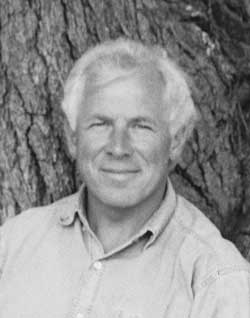
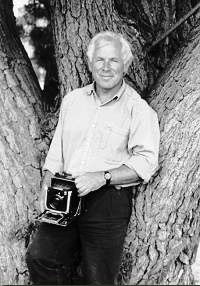
Birth 2nd March 1945 in a refugee camp in Wiesbaden, Germany
Death 28th March 1996 Western Arthur Range in southwest Tasmania
Peter Dombrovskis was born in Wiesbaden, Germany in 1945 of Latvian parents. He emigrated to Australia in 1950 with his mother Adele and started taking photographs in the 1960's. He was strongly influenced by Lithuanian-Australian pioneer, conservationist and photographer Olegas Truchanas, who became a father figure to him. He was equally influenced by landscape photographers of mid-century America such as Ansel Adams, Edward and Brett Weston and Eliot Porter.
In February 2003, Peter Dombrovskis was inducted into the International Photography Hall of Fame in Oklahoma City, now in St Louis Missouri, United States of America. Peter is the first Australian to be accorded this honor and one of only 58 people to be inducted over the 200 or so years of the history of photography. Peter's work is also represented in the collections of the National Library, National Gallery of Australia, Australian Heritage Commission, National Gallery of Victoria, Queen Victoria Museum and Art Gallery, Tasmanian Museum and Art Gallery, the Royal Tasmanian Botanical Gardens, the Wilderness Gallery and many private collections.
Some of Peter's photographs have been instrumental in the conservation of various Tasmanian wild places including the prevention of the damming of the Franklin River. Peter's works have been published over 35 years in the form of books, calendars. cards and posters.
The National Library of Australia has acquired the archive of Peter's transparencies so that future generations may view and enjoy his photography.
All Peter's photographs were taken with a large format Linhof Master Technika 5 x 4 inch flatbed field camera. He used three lenses; a 90mm Nikkor F4.5, a 150mm Schneider Symar-S (standard lens) and a 300mm Nikkor MF9. He sometimes used a polarizing filter.